

TIDE PREDICTIONS & SOLUNAR FEED TIMES INSIDE! Only $4.95 July 2024 TSFMAG.COM TPWD Celebrates ONE BILLION Fish Stocked! CCA Texas Advocacy Update WHERE ARE THE LING? Harte Institute Tagging Program Seeks Answers



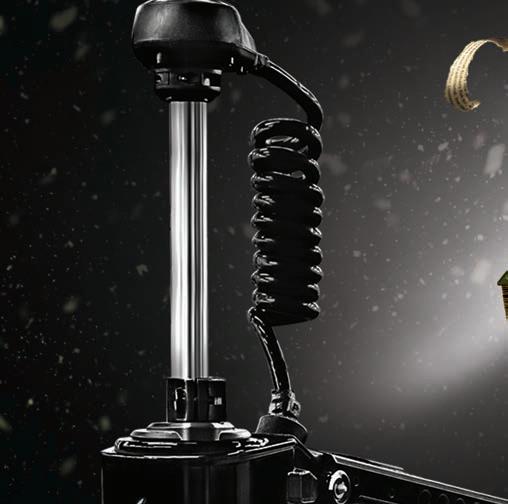





Introducing a new chapter in Total Boat Control with the Power-Pole MOVE™ Brushless Trolling Motor. These two models conquer the harshest conditions with unrivaled power, unmatched durability and unbelievable efficiency that operates with near absolute silence. Go farther. Fish harder. Make every move count.


Power-Pole.com
Now Available At Your Local Dealer

Our cover angler is





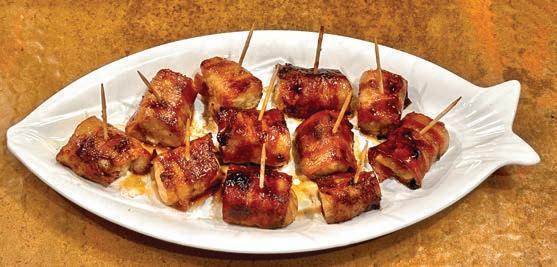
WHAT OUR
H AVE TO SAY 56 The View from Matagorda Bink Grimes 58 Mid-Coast Bays with the Grays Shellie Gray 60 Hooked up with Rowsey David Rowsey 62 Wayne’s Port Mansfield Report Wayne Davis 64 South Padre Fishing Scene Ernest Cisneros REGULARS 6 Editorial 54 New Tackle & Gear 66 Fishing Reports and Forecasts 68 Catch of the Month 70 Gulf Coast Kitchen DEPARTMENTS 34 Let’s Ask The Pro Jay Watkins 38 Shallow Water Fishing Dave Roberts 42 TSFMag Conservation News CCA Texas 46 TPWD Field Notes TPWD Staff 48 Extreme Kayak Fishing & Sharks... Eric Ozolins 52 Mostly Sight-Fishing Jake Haddock 61 Science & the Sea UT Marine Science Institute FEATURES 8 Sweet Spots Within Spots Steve Hillman 12 The Satisfaction Meter Kevin Cochran 20 Summer on Sabine – So Many Variables Chuck Uzzle 26 Tagging Ling Joe Richard 30 The Thrill of Bull Redfish Everett Johnson 26 52 70 64 JULY 2024 VOL 34 NO 3 CONTENTS ABOUT
GUIDES
THE COVER
Will
showing off
30-inch trout he caught during
summer heat. Will
trophy
Way to
Will!
winter
4 | July 2024
Acosta,
an 8-pound
mid-
tricked his
with a KWigglers Wig-A-Lo.
go,
Who said you must wait until
for a trophy?
EDITOR AND PUBLISHER
Everett Johnson | Everett@tsfmag.com
VICE PRESIDENT
PRODUCTION & ADVERTISING DIRECTOR
Pam Johnson | Pam@tsfmag.com Office: 361-785-3420 Cell: 361-550-9918
ADVERTISER REPRESENTATIVES
Bart Manganiello Bartalm@optonline.net
Pam Johnson | pam@tsfmag.com Office 361-785-3420 Cell 361-550-9918
Everett Johnson | everett@tsfmag.com Office 361-785-3420 Cell 361-550-3637
CIRCULATION
SUBSCRIPTION – PRODUCT SALES
Vicky Morgenroth Store@tsfmag.com
DESIGN & LAYOUT
Stephanie Boyd Artwork@tsfmag.com
SOCIAL MEDIA COORDINATOR Bob Barrera
Texas Saltwater Fishing Magazine is published monthly.
Subscription Rates: One Year (Free Emag with Hard Copy) Subscription $32.00
E-MAG (electronic version) is available for $15.00 per year. Order on-line: WWW.TSFMAG.COM
MAKE CHECKS PAYABLE TO: Texas Saltwater Fishing Magazine Attn: Subscriptions P.O. Box 429, Seadrift, Texas 77983
* Subscribers are responsible for submitting all address changes and renewals by the 10th of the prior month’s issue. Email store@tsfmag.com for all address changes or please call 361-785-3420 from 8am - 4:30pm. The U.S. Postal Service does not guarantee magazines will be forwarded.
HOW TO CONTACT
TSFMAG:
PHONE: 361-785-3420 FAX: 361 792-4530
MAILING ADDRESS: P.O. Box 429, Seadrift, Texas 77983
PHYSICAL ADDRESS: 58 Fisherman’s Lane, Seadrift, TX 77983
WEB: www.TSFMAG.com
PHOTO GALLERY: photos@tsfmag.com




PRINTED IN THE USA.
Texas Saltwater Fishing Magazine (ISSN 1935-9586) is published monthly by Texas Saltwater Fishing Magazine, Inc., 58 Fisherman’s Lane, Seadrift, Texas 77983 l P. O. Box 429, Seadrift, TX 77983 © Copyright 1990 All rights reserved. Positively nothing in this publication may be reprinted or reproduced. *Views expressed by Texas Saltwater Fishing Magazine contributors do not necessarily express the views of Texas Saltwater Fishing Magazine. Periodical class permit (USPS# 024353) paid at Victoria, TX 77901 and additional offices.
POSTMASTER: Send address changes to Texas Saltwater Fishing Magazine, Inc., P. O. Box 429, Seadrift, TX 77983.
















MADE IN THE U. S. A .










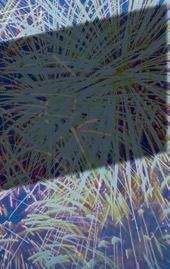
START up with ease. Every time. RUN faster, cleaner, smoother. STORE with
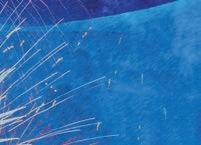


THE FUEL YOU USE in your vehicles and equipment is evolving every day. New fuel chemistries and new regulations require a new approach to treating fuel issues.





STAR TRON is designed specifically for modern fuels—including fuels containing ethanol—as a truly multifunctional fuel treatment.












STAR TRON is an ideal all-season, all-purpose treatment that is proudly MADE IN THE USA.














































use.
confidence between


View The Video Open Camera & hover over QR Code. When link appears, tap to open in YouTube.
July Issue Highlights
A BILLION FISH & COASTAL INFRASTRUCTURE PROJECTS
If scorching heat is your idea of great fishing weather then you ought to be thrilled. I don’t believe the thermometer has hit a hundred yet, but Lord it’s been close. My personal relief strategy is getting on the water at the crack of dawn and back at the dock around noon. Wading waist-deep certainly helps. We are also fond of late afternoon trips, especially when the tide and solunar tables align favorably. Either way you decide to go, be sensible as regards sun exposure and hydration. Sunscreen, wide-brimmed hats, face masks and lots of non-alcoholic beverages will help you stay in the game. I want to draw your attention to a couple of significant articles presented in this issue.
First is TPWD’s announcement and celebration of one billion fish stocked since the inception of their fish hatchery and stock enhancement programs. Among the U.S. coastal states, Texas is the undisputed leader in saltwater stock enhancement. In fact, the hatchery and rearing protocols developed right here in Texas for red drum, spotted seatrout, and southern flounder are the basis for nearly
all the saltwater stock enhancement programs practiced in other states and even elsewhere in the world. Texans have many things to be proud of and this is certainly one of them. With shrinking habitat and growing participation in saltwater fishing, Mother Nature needs all the help she can get. Kudos to TPWD on this great accomplishment!
Second is the CCA Texas Advocacy Update. Texas is a huge state with a powerful economy, mighty industries that are expanding rapidly, and a burgeoning human population. Our population surpassed 30 million in 2022 and is projected to top 50 million in the next 20 years. Where all these people will live and work, and how basic needs such as public water supply for human, industrial, and agricultural needs will be met are enormous questions. The strain that will be placed on natural resources can only be imagined, not the least of which will be our bays, estuaries, and fisheries. Shane Bonnot has provided an excellent update on several projects already underway or in planning stages that have potential to alter the coastal landscape very significantly. Through all of this, it is good to know that CCA Texas and a host of other fine organizations and agencies have their eyes on the ball to insure the future wellbeing of our precious coastal resources remain front and center during planning and execution of these necessary projects.
In closing, if you are not already a member, I want to encourage all our readers to join CCA Texas. And while you’re at it, get the whole family registered for the STAR tournament!


EDITORIAL
6 | July 2024


 Joel Estes tricked this solid one on a 5” Slammin’ Chicken Assassin while casting to nervous mullet over a sand flat.
Joel Estes tricked this solid one on a 5” Slammin’ Chicken Assassin while casting to nervous mullet over a sand flat.
Sweet Spots within Spots
STORY BY STEVE HILLMAN
Ifished tournaments on and off for years. I sometimes not only miss the competition but also the camaraderie and conversations we had at captain’s meetings and weigh-ins. I formed a lot of friendships through tournaments that have lasted through the years. While standing around talking, the questions we asked one another usually started with something like, “So how’s everything been going? How’s the family?” Then we’d inch a little closer to what we really wanted to know; “How was your bite today? Did you guys fish shell or mud? What did you catch most of them on?” But there was still that one question none of us really ever came right out and asked but seemed to always be a subtle buzz in the room among anglers. The old million dollar question; “WHERE did you catch ‘em?” While I don’t think that exact question was ever actually asked, for some reason most of us already knew the answer. If it was a two-day tournament then everyone seemed to know by the end of the second day where everybody had been fishing. Oftentimes it was simply because we had seen them on the water during the tourney. Consequently, year after year, more and more “spots” became common knowledge.
The same thing happens among those of us who are the water almost daily. Anglers see where others are fishing and then they learn the results of their day either by perusing social media or simply talking amongst their own network of friends. I’m by no means attempting to shed a negative light on such practices, but one thing I’ve personally observed is that when anglers are able to obtain certain “hotspots” through whatever means they have there is a task that still remains – learning when and how to fish those so called “hot spots.”
TSFMAG.com | 9


An angler who has been given a GPS coordinate can sometimes do more harm than good by knowing very little about that spot. In the end, they typically not only hurt their own chances of catching anything, but others as well. I witnessed it just the other day as I passed by a cove with a reef in the middle that had been holding lots of quality trout. I knew from experience fishing that particular spot where to anchor and what approach to take while slowly wading toward that small reef. These guys had their boat anchored directly on top of the reef and were casting out into the mud! On another day I watched a guy idle through several trout slicks as he had his face glued to his GPS, presumably trying to get on “the spot.” My list of examples is extensive but instead of endlessly harping on such miscues I’d rather make an honest attempt to explain what I believe are the most effective ways to find and fish these “sweet spots” so that we can all enjoy them together. After all, we all had to learn through trial and error in the first place.
There’s a particular stretch of shoreline where I’ve been having very good success in recent weeks. From out on the bay, looking toward the shoreline, everything looks pretty much the same, but there are two sweet spots along this particular stretch. I found one of them as I was slowly cruising the shoreline searching for signs of life. I noticed several small slicks emerging from near the bank. I killed my big motor and deployed the trolling motor, easing in about 100 yards upwind. I quietly slipped the anchor over the gunwale. After

strapping on our wading belts my clients and I eased into the water. As I stepped off of the bottom rung of boarding ladder I felt live oyster reef beneath my feet. We started catching 16- to 20-inch trout right there! After catching and releasing at least 30 we made our way down the shoreline toward the area we had originally seen the slicks.
I had picked out a partially dead and crooked salt cedar tree to use as a landmark when I first noticed the slicks. The small but well-defined sheens had since dissipated but we were almost within casting distance of the crooked tree. Jody hooked up with a small trout. Then I did. Then Paul did. Suddenly slicks started popping up just off the bank. The bite eventually faded after catching another 60 or so trout to 3-pounds. It was then when I made my way to the tree to learn what we were casting to. I walked the entire contour of this small finger reef in every direction so I could form an image in my mind of what we were fishing. Jody, Paul and I caught 213 trout in 3 different spots along that shoreline that morning, with 170 of them ranging from 15-22 inches. The kind of morning everybody dreams of experiencing! The common traits present at all three stops were live shell, an abundance of active bait, depth changes, and slicks. We obviously never caught anything really big but when you’re getting bit almost every cast; who really cares?

I have fished this stretch of shoreline in many different conditions. That epic morning I shared with Jody and Paul happened to be the culmination of many factors occurring at
Paul Hitchcock with a solid speck!
Jacob caught plenty of fish while casting along the edge of a shell drop-off on a very windy morning.
Excessive freshwater coming down the Trinity and San Jacinto Rivers recently pushed a lot of trout into the southern portions of Galveston Bay. The progression of the freshwater inundation is clearly visible in this photo.
10 | July 2024
Frank Mistretta with a beautiful trout he caught while casting along the edge of a shallow sandbar.


once. The wind was southeast at about 15 mph. The tide had reached its peak and was just beginning to drop as we arrived. We were also entering a solunar major feeding period. The barometric pressure was extremely low at 1008 millibars. We were fishing five days before a full moon and, as I mentioned, we had all the visible signs and habitat in place. As if there couldn’t be more favorable factors to add to the list, we were experiencing somewhat of a stack-up scenario from excessive freshwater run-off in the northern reaches of the bay. Not only were the trout more concentrated than normal, we also had sharks roaming just off the ledge in front of us and dolphins literally tossing two to three pound trout into the air before devouring them. All of this activity had the trout pushed up tight to the shoreline where we were fishing.
We obviously don’t always have the luxury of the perfect storm of conditions we experienced that morning. As a matter of fact, I would say that more than half the time these days we’re hard-pressed to find even a single slick, much less several. So what do we do when we can’t see slicks or other surface activity such as balled-up shad, flipping mullet, or hovering birds? This is when we get back to focusing on high percentage “spots.” Sand flats with drop-offs near major passes would be one example. Once we’re there, we try to home in on the sweet spots within those spots. I personally view these “dead water days” as opportunities to learn more about the areas we’re fishing.
Such was the case on one recent muggy morning. There was very little tide movement and no wind. Warm, stagnant water will typically have very little visible bait activity as everything will tend to be holding near the bottom of the water column. This is when dragging a small bait like a Bass Assassin 4-inch Sea Shad on the bottom can be very effective. I’ll even dead stick it at times, including a few subtle twitches occasionally during the retrieve. On this particular morning our lines would just get tight, and then

Epic Morning! View The Video Open Camera and hover over QR Code. When link appears at top of screen tap to open in YouTube.
start moving sideways. We’d let it load up and then set the hook. It’s a strange way to fish but it works when we’re presented with these types of conditions. I’ve said it before but it’s very important not to get stuck in simply working your lure one way all the time. We must vary our presentations based upon the level of feeding and attitude of the fish – aggressive versus non-aggressive.
Now that water temperatures here in Galveston Bay are ranging from the mid-70s to mid-80s we know that our trout are going to predominantly reside over hand sand, grass, and hard oyster reef. Knowing this we’re able to pretty much eliminate most areas characterized by thick mud bottoms and other winter-like bottom landscapes. For folks who are unfamiliar with a bay system they plan to fish, I recommend purchasing a fishing map such as Hook-N-Line which gives GPS coordinates and even goes so far as to list spots that are better during various seasons.
Once we’ve determined where we want to fish it’s very important to move into our fishing area as quietly as possible. Otherwise, everything we attempt from that point forward is moot, as we have already alerted and scattered most of the fish we are hoping to catch. As we shuffle our feet across the bottom we’ll find shell, potholes, and subtle contour changes that will eventually lead us to the fish. It may not be on that particular trip but maybe on the next one. Over time we end up discovering patches of live oysters and other structure that eventually become our very own sweet spots.
See y’all on the water… and Best of Luck!
STEVE HILLMAN
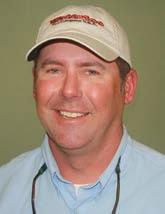
Steve Hillman is a full-time fishing guide on his home waters of Galveston Bay. Steve fishes the entire Galveston Bay Complex, wading and drifting for trout, redfish, and flounder using artificial lures.
Phone 4 09-256-7937
Email captsteve@hillmanguideservice.com
Web w ww.hillmanguideservice.com
CONTACT
Ken Kinsey, who came all the way from St. Louis caught this pretty red and several trout on a very windy day fishing clumps of oysters while drifting leeward shorelines.
TSFMAG.com | 11
Jody Moses and Paul Hitchcock put of a clinic while casting to slicks that were popping up over a shoreline reef!
The Satisfaction

Satisfaction Meter
STORY BY KEVIN COCHRAN

Some types of satisfaction feel better than others. The degree of satisfaction one derives from an activity depends on the nature of the endeavor and on the priorities of the actor. Certainly, overcoming long odds and accomplishing something difficult and important pushes the needle on the satisfaction meter higher than simply completing a trivial task.
Mark Twain wrote, “Work is what a body is obliged to do. Play is what a body is NOT obliged to do.” For most anglers, fishing qualifies as play, not work. Even for fishing guides, who choose to do what they do and often have fun doing it, fishing feels more like play than work, at least some of the time.
Changing the oil and filter on the truck, doing the laundry and mowing the grass all fit readily into the work column, at least for most people. If an activity dwells in the world of work, if it MUST be done, most anyone would seek the easiest way to complete the task and would derive the highest level of satisfaction from finishing it as quickly as possible, using minimal effort. In the work world, the degree of satisfaction sourced from an accomplishment directly stems from the outcome of the effort. The straightest, simplest path to the desired outcome leads to the highest level of satisfaction.
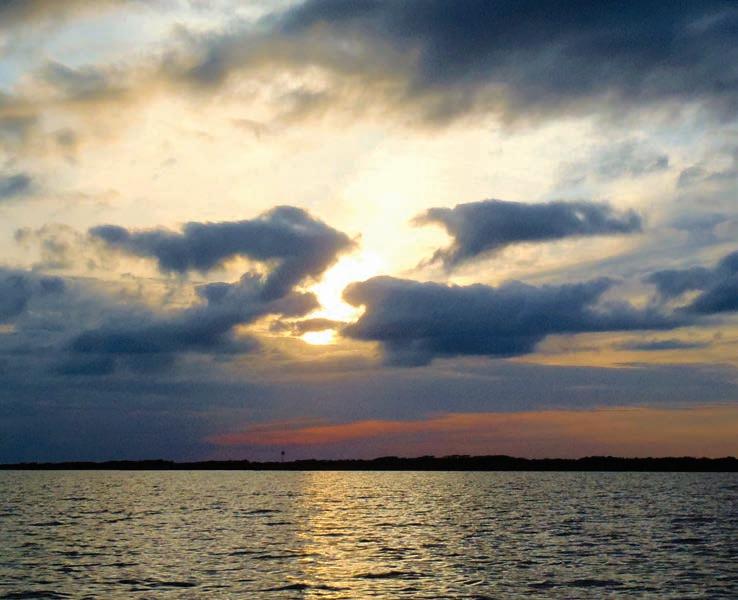
In the province of play, direct paths to a finish line do not necessarily lead to the proverbial promise land of premier satisfaction. When one actively chooses to do something, one often consciously builds some difficulty into the task, foregoing the path of least resistance. This makes the outcome more uncertain, and places more emphasis on the process needed to achieve the outcome than on the outcome itself.
When one plays, one relishes the execution of the task fully, without singular focus on completion. This fondness for process alters the type of satisfaction generated by the activity. A working person seeks satisfaction with outcome, while a playing person seeks satisfaction through control of process. These truths play out in the angling realm in several significant ways.
Despite the fact they perceive fishing as play rather than work, some anglers focus almost entirely on outcome satisfaction as a way to measure their success on a given day or in a given situation. Surely, a fishing guide or competitive angler would more likely do this than a weekend warrior. Winning a tournament or sending a group of customers home with their limits produces plenty of outcome satisfaction.
Some folks accuse fishing guides of becoming far too committed to outcome satisfaction, because emphasizing outcome more than process potentially places their own interests above those of their clients. A captain choosing to stop the boat and throw at working gulls in order to box fast limits after his customers told him they wanted to wade and learn something about catching fish on topwaters would be guilty of this. A guide showing up at the dock with a live-well full of bait after his customers told him they wanted to fish with lures provides a more extreme example of how prioritizing outcome over process can reveal a kind of selfishness in the person making the choices.

Guides who choose to fish with live bait with the goal of helping their customers catch limits so they can race back to the dock and run another charter would fall into this category, at least in some ways. To be fair, some customers want exactly what these guides give them, because they too perceive the easiest path to the desired outcome as the most satisfying one. It makes no sense for me to say I’m better than these people and the guides they hire, or that they’re making a mistake or doing something wrong, and I’m not.
But, the truth remains. Whether a guide or a recreational angler, anyone choosing to use live bait instead of artificial lures makes a choice to make the path to the desired outcome of catching fish easier, so they place more value on outcome than on process. By doing so, they change the nature of the satisfaction meter.
The chart included here helps illustrate this point thoroughly. The colored bars represent what I’ve labeled the Bite Attitude Spectrum, which serves as the filter for fishing’s Satisfaction Meter. On the left of the chart, green represents a full-on frenzy. The bulk of the chart shows paler green for good, yellow for mediocre and orange for a poor bite. On the far right, the red places an appropriate hue on a dead bite.
I’ve made the percentages about 5/30/30/30/5, but those numbers aren’t really relevant in this discussion. Surely, a full-on frenzy occurs only a small percentage of the time, and conversely, the bite is not often completely dead. Anglers find themselves fishing in situations where the bite attitude of the fish ranges between good and poor most of the time.
Two primary aspects of a situation dictate an angler’s perception of the bite attitude of the fish–the number of fish present and the alignment of environmental variables I call stimulators, meaning weather events, the position of the sun and moon in the sky and tide movements, primarily. An angler experiencing frenzied
A rising or setting sun or moon often stimulates fish into feeding actively, especially in places where tidal movements are minimal.
14 | July 2024
Alton Morris expressed supreme satisfaction after catching this beautiful trout on a hot summer day when the catching wasn’t particularly easy.

Fish Responsibly,
Release Responsibly,
Have you caught your trophy snapper or grouper and released it just to see it float off?
Return ‘Em Right is here to help! Sharpen your release skills today through a 15-minute review of best release practices and eligible anglers will receive $100 of release gear FOR FREE .

Join the community at ReturnEmR ight.org.

GET FREE
GEAR.


activity and catching a fish every cast or almost every cast for some significant length of time likely operates with multiple stimulators in play AND in a place where plenty of fish swim within reach.
An angler fishing in a place with scant numbers of fish won’t experience the sweetness of a frenzy to the same level as one fishing in a place crowded with competing predators. One simply cannot ignore the importance of fish location as a component in any angler’s perception of the bite attitude from moment to moment, because of what I call Absolute Number One. Bluntly stated, the Absolute rules: you can’t catch a fish that ain’t there.
Certainly, an angler standing or drifting in the midst of plenty of feverishly feeding fish and experiencing a frenzy does feel some sense of satisfaction. However, the level of the satisfaction depends on the priorities of the angler. The two lines on the chart graphically represent the two types of satisfaction anglers feel. For people focused solely on outcome, fast and supremely easy catching spurs the highest level of satisfaction, as the black line indicates. For those who value control of process over outcome, the satisfaction in a frenzy reads lower on the scale. Making things too easy for these people steals some of their satisfaction.

The line representing satisfaction with outcome declines gradually from left to right, reaching zero during a dead bite. This graphically defines a central concept for people operating in this mindset–satisfaction is directly proportional to catch-rate. The tougher the bite gets, the less satisfaction these folks feel; many abandon the effort long before their level of satisfaction falls to zero. This truth motivates people like this to use bait. They believe strongly in a familiar mantra–”catching is more fun than fishing.”
On the other hand, people who choose to fish exclusively with lures experience satisfaction in a different way, because they place more value on process than outcome, specifically on their ability to control the outcome through their process. The blue line on the chart represents this graphically. Moving from left to right, the level of process satisfaction declines somewhat from just above a hypothetical mid-line to slightly below it as the fish become somewhat tough to catch. But, if the fish become more difficult to catch AND anglers operating in this mindset prove they’re able to catch some, especially some of the “right” fish, their satisfaction climbs to its zenith.
Catching a big trout or two on a day when the bite-rate is low often moves the needle on a lure chunker’s satisfaction meter to the top.
16 | July 2024
Sidney Shetley was proud to catch this fat trout on a frigid day, when earning strikes was nearly impossible.


Fish location skills play a key role in this scenario, as they do in any fishing situation. An angler can’t scratch out a few of the right fish during a difficult situation if said angler fails to find a place where some of those fish swim within reach. But, when an angler whose level of satisfaction depends on the ability to control some aspect or aspects of a situation and catch some of the desired fish succeeds in accomplishing the goal, their level of satisfaction rises to the top of the chart.
I’ve experienced this many times in my career, so I can testify to the veracity of what I’m saying. Standing in a group of anglers who can’t catch a fish and producing bites on a regular enough basis to prove the efficacy of a specific presentation ranks right at the top of most satisfying achievements for a lure chunker motivated by process satisfaction. This often occurs on a day when a relatively easy bite dies, but the group believes plenty of fish remain in the place.
Then, if one of the members of the group discovers a productive lure, more likely a specific presentation method, then begins earning strikes at a higher rate than any other members of the group, this scenario plays out. A day of competition can also reveal the truth inherent to the lines on the chart. Anglers who’ve used creative methods to catch fish and come to the dock with what feels like a mediocre sack and then learned they’re at or near the top of the leader board know how good this can feel. People who place value on satisfaction with control embrace adversity, because overcoming it feels so fulfilling and meaningful.
Easier is better, when the goal is simply to get a job done, and impossible is neither satisfying nor fun. Easier isn’t always better, though. When we’ve chosen to challenge ourselves, to relish the process of playing, controlling what we can control and accomplishing something difficult becomes the springboard to the highest level of satisfaction.

View The Video
Open Camera and hover over QR Code. When link appears at top of screen tap to open in YouTube.
Satisfaction with Control
KEVIN COCHRAN

Kevin Cochran is a long-time fishing guide at Corpus Christi (Padre Island), TX. Kevin is a speckled trout fanatic and has created several books and dvds on the subject.
Kevin’s home waters stretch from Corpus Christi Bay to the Land Cut.
T ROUT TRACKER GUIDE SERVICE
Phone 361-688-3714
Email kevincochran404@yahoo.com
Web www.captainkevblogs.com
CONTACT
18 | July 2024
A Coastal Retreat Like No Other Palacios, Texas
Nestled on the shores of Matagorda Bay, Palacios, Texas, affectionately known as the “City by the Sea,” stands as the shrimping capital of Texas and a premier destination for those seeking an unplugged retreat. Beyond its tranquil beauty, rich heritage, and vibrant community, Palacios is embracing a future filled with promise and excitement, making it not just a hidden gem on the Texas coast but a cherished sanctuary for both residents and visitors alike.
embracing Nature and Adventure
Palacios has long been a haven for nature lovers and outdoor enthusiasts. Its waterfront location is ideal for fishing, sailing, and kayaking, complemented by the picturesque Palacios Pavilion for those captivated by breathtaking sunrises and sunsets. The town’s status on the Great Texas Coastal Birding Trail, celebrated by the annual Matagorda Bird Fest, underscores its commitment to preserving natural beauty and wildlife.
a rich Historical Canvas
The story of Palacios is told through landmarks like the City by the Sea Museum and the Luther Hotel, a beacon of architectural preservation undergoing a transformation into a modern destination hotel while retaining its historic essence. These sites, alongside Palacios’s pivotal role in the seafood industry and its significance in Native American history, paint a vivid picture of a community deeply rooted in its past.
the pulse of Community + Tradition
The spirit of Palacios shines brightest during community events like the Seaside Holiday, where Santa’s seaside arrival captures the imagination, and the annual seafood festival, which, alongside events such as Pedal Palacios and Birdfest, heralds the town’s burgeoning future. These traditions not only strengthen community bonds but also signal Palacios’s readiness to welcome the world.
Vision for the Future: A Vibrant Seaside + Downtown Revival
Looking ahead, Palacios is set to further enhance its appeal with exciting developments. The establishment of the first oyster hatchery in Texas heralds a new era for the local seafood industry, promising economic growth and sustainability. Plans for seaside improvements, including a splash pad, kayak launches, and expanded recreational activities, aim to enrich the quality of life for families and adventure-seekers alike.
Efforts to revitalize the iconic downtown area are underway, with initiatives to transform it into a bustling center of excitement, culture, and commerce. These enhancements are designed not only to attract visitors but also to invigorate the local economy and foster a sense of pride among residents.
palcios: A Place to Call Home, Sanctuary, Loved
Through these concerted efforts, Palacios is emerging as more than just a coastal gem; it’s becoming a vibrant sanctuary where the community’s dreams and aspirations are coming to fruition. It’s a place where the past is cherished, the present is celebrated, and the future is bright with possibilities. Palacios invites all to discover its beauty, engage in its traditions, and contribute to its promising future. Here, amidst the gentle waves and open skies, lies a town that is not just to be visited but to be called home, to be called sanctuary, to be called loved.

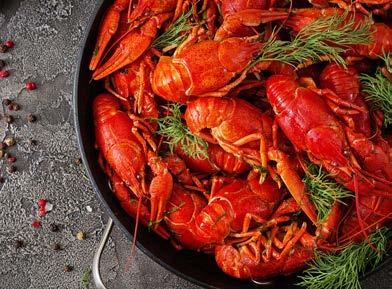
Palacios invites all to discoverits beauty, engage in its traditions, and contribute to its promising future.


Discovering
 Dow Gene Anderson with a healthy redfish that couldn’t resist a ZMan plastic dangled below a 4-Horsemen rattling cork.
Dow Gene Anderson with a healthy redfish that couldn’t resist a ZMan plastic dangled below a 4-Horsemen rattling cork.
SUMMER ON SABINE So Many Variables
STORY BY CHUCK UZZLE
Easily one of the most alluring features of Sabine Lake area is the fact that you can catch so many different species of fish in a relatively small area. Brackish water often holds both fresh and saltwater fish in good numbers, as well as great quality. It’s never uncommon to see a stringer of fish include flounder, redfish, speckled trout, and occasionally a really nice largemouth bass. If you play your cards right you may even throw in some croaker, sand trout, and a few Kentucky spotted bass just for good measure. The potential for all these fish to be in the same body of water makes each strike that much more exciting because you never know what species might be providing the tug until you reel it in.
Speaking of not knowing who will show up, it’s really going to get interesting as the summer progresses and we continue to recover from the huge late spring and early summer rains that produced incredible runoff. The influx of fresh water put most typical patterns on hold for several months but that has begun to change for the better. The amount of bait coming from the marshes is cause for cautious celebration as loads of brown shrimp, shad, and small mullet have shown up in big numbers along with plenty of redfish and solid numbers of trout.
Our year thus far has been a stark contrast to years past when we have had dry spring seasons with little or no significant runoff from either Toledo Bend or Sam Rayburn. Under those dry conditions an entirely new group of fish such as jack crevalle, sharks, rays, and even tarpon make the trek up the channel and both rivers as the saltwater slowly creeps farther inland. These party crashers would show up and make their presence known in the form of screaming drags and great tales of the one that got away. Nothing gets your attention like the prospect of getting spooled and actually having to chase a fish down with the boat.
TSFMAG.com | 21
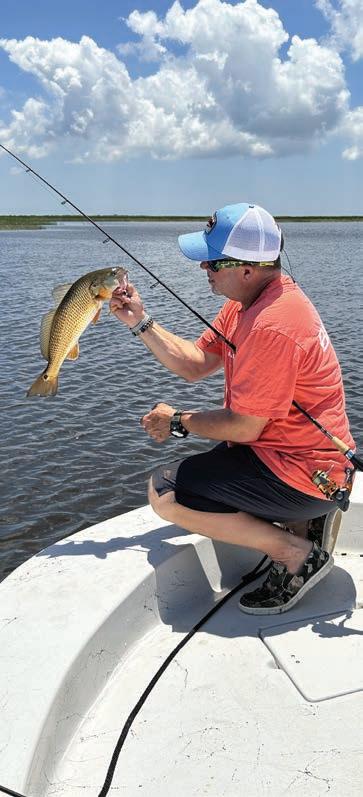

In areas where lots of local anglers congregate, it’s often an absolute circus when someone hooks up with a stud jack in the middle of an armada. The chase scene that ensues is like something from the Bourne Identity with boats weaving in and out while trying to avoid everything from anchor lines to fishing lines. Nothing beats the prospect of landing the big one… it’s why we fish. Hopefully as summer progresses and the water conditions continue to improve we will see those fish that normally hang out closer to the gulf make an appearance in the lake. Until that happens we will be perfectly happy with the growing numbers of redfish and trout that are already here.
While on the subject of big fish and areas where people congregate, you can bet there will be some great fish taken at the jetties this month. Only a few very dedicated anglers will take advantage of the ultra-early bite before the masses reach the rocks. Good tide changes a few hours before dawn and all the traffic is a winning recipe to help tangle with some big fish, especially trout. There are very few strikes that are as vicious and addictive as speckled trout at the jetties on topwater plugs in the dark. I used to wonder what those boats were doing heading back to the dock as the sun was just breaking the horizon…until I got a chance to try out the pattern myself. All I can say is the reward is certainly worth the effort.
Now if fishing in the dark is not your favorite, don’t worry because you can still be successful during daylight hours with a just a small variation to the approach. Topwater plugs worked in and around

rocks will still produce some fish when the sun comes up, but swimbaits will just flat wear those fish out. There are several styles of swimbaits you can use and they all work. The conventional soft plastic swimbait, such as the Mulletron from ZMan, or a Usual Suspect with a paddletail is a great option when it’s fished on a light jighead to allow for a slower fall and more subtle presentation.
Other baits that have definitely earned mention along the jetty rocks are the shallow-running crankbaits like the Swim’n Image from Heddon, Mann’s 1-Minus, or any number of the Rapala lures. These plugs are really user-friendly and allow fishermen the opportunity to dig around in and bounce off the rocks, triggering brutal strikes from hefty speckled trout and redfish. Perhaps the greatest attribute of swimbaits and crankbaits is that they allow you to cover lots and lots of water in a short period of time, making you all the more productive.
Going forward into the major part of summer we will continue to key in on the better tide changes and the presence of bait. As the shad get bigger and begin to group up in massive rafts out in the open lake, look for the surface feeding activity of trout and redfish along with flocks of birds that go with it. Both gulls and terns will be hustling a free meal as bait gets pushed to the surface by schooling game fish. Many times during the summer months these big schools of bait will also be harassed by ladyfish and most anglers won’t stick around very long to do much investigating, which is a huge mistake. I can’t tell you how many times a situation like this turned from a nuisance species like ladyfish to a big school of redfish in just a
the
ZMan’s Mulletron is a highly versatile swimbait.
22 | July 2024
(left) Very colorful backwater redfish for the author, very common during summer. (above) Catching chunky largemouth bass in the same water with saltwater species makes Sabine special. (middle) ZMan’s Mulletron is a highly versatile swimbait.

matter of minutes. Don’t be fooled – if bait is plentiful and active the more desirable species of predators are usually not very far away. Give that situation a fair chance and don’t run away from what could turn out be an amazing bite.
I know it’s almost unheard of nowadays to mention live bait, but it’s still certainly something to consider. Here on Sabine we really don’t have a consistent supply of the higher profile live baits such as shrimp and croaker, so we generally have to catch our own with a cast net. Live shad is far and away the most popular live bait because it’s the easiest to locate and they definitely work. A frisky live shad dangled below a rattling cork around big schools of bait is a great way to get your string stretched and your drag tested. Often times you can get a school of fish to fire up and get active as soon as you catch a fish under a cork because it mimics the sound of feeding fish. I would not dare leave the dock without having a cast net and a few corks handy, especially during these warmer months.
Now that we are firmly headed into the summer months and a more stable weather pattern, many folks will be trying to make up for the fishing time they lost earlier in the year. With just a small

View The Video Open Camera and hover over QR Code. When link appears at top of screen tap to open in YouTube.
amount of cooperation from the weatherman and Mother Nature we should be able to get back on track and fish more normal patterns. The summer months mean extreme heat and sharp weather swings so keep an eye out for thunderstorms that seem to appear out of nowhere. Please, never take a chance with lightning or excessive heat. Neither of these are anything to be messed with and each has its own serious repercussions.
If you are fortunate to take a kid or two fishing this summer, remember that the trip is about them. The worst thing you can do is keep them out too long or force them to stay and be miserable because they won’t come back next time, and no fish is worth losing a potential lifelong fishing partner.
CHUCK UZZLE
CONTACT

Phone 409-697-6111
Email wakesndrakes@yahoo.com
Website wakesndrakes.com
 Chuck fishes Sabine and Calcasieu Lakes from his home in Orange, TX. His specialties are light tackle and fly fishing for trout, reds, and flounder.
Chuck fishes Sabine and Calcasieu Lakes from his home in Orange, TX. His specialties are light tackle and fly fishing for trout, reds, and flounder.
24 | July 2024



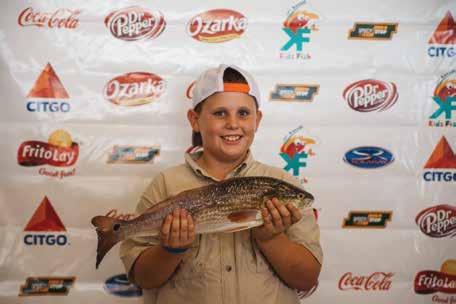
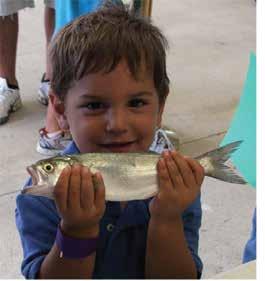
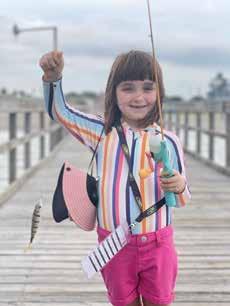

TSFMAG.com | Port O'Connor, TX FREE Fishing Tournament FOR Kids AGES 2-12! Join Speedy Stop at its 23rd annual Kids fishing tournament. This is an incredible event that gives Kids the opportunity to get outdoors, Try to catch some fish, and spend some Quality time with family and friends. 23 Register Online at www.speedystop.com. online registration closes Aug. 4th or register on-site the day of the event.
 Not the ideal landing net, with a harsh nylon mesh, but better than using a gaff.
Not the ideal landing net, with a harsh nylon mesh, but better than using a gaff.
Tagging Ling
STORY BY JOE RICHARD
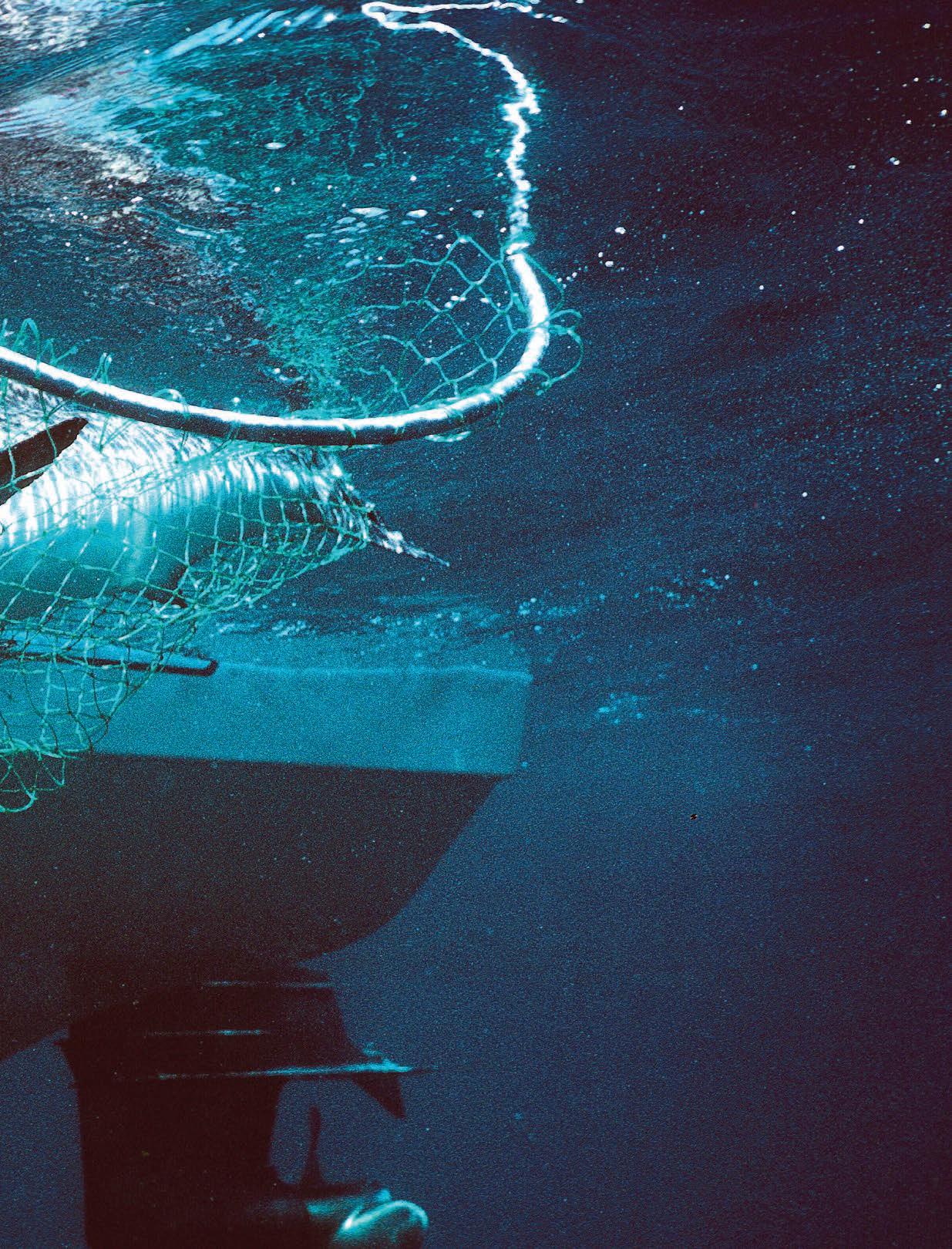
Cobia (ling) just keep getting more scarce, with popular tournaments recently cancelled along the Florida Panhandle, where these fish used to school along the beach and were caught by the hundreds from surf piers. One Galveston charterboat related that 15 or 20 years ago, he was logging 200 or more ling per year. In recent years, it’s been 15 or 20 fish. That’s a decline of 90 percent.
Texas is more of a frontier with more offshore habitat and choppy seas even during early summer’s fishing season. However, offshore fishing effort has declined here too, along with the oil rigs and shrimpboats that once attracted these fish. Maybe less fishing pressure will aid in recovery of the Western Gulf’s population of ling.
“There is a saying that Florida has all of the fishing pressure and none of the fish, and we have all of the fish and none of the effort,” says Matt Streich, assistant director and senior research scientist at the Sportfish Center, run by the Harte Research Institute for Gulf of Mexico Studies at Texas A&M’s campus in Corpus Christi.
Several cobia studies are now being conducted by Streich and colleagues. In addition to more expensive satellite tracking tags, they’re also using the reliable shoulder dart tags like we used in the late 1980s, that program also run out of Corpus Christi by Steve Qualia. Back then ling were more common, and his volunteers tagged 2,500 Texas ling. Today, because of scarcity, getting tags in these fish is more of a challenge.



(I tagged 105 ling for Qualia from my boat in 1987 alone. Later in 2002 in my Cobia Bible book, we listed 36 recaptures of Texas fish and a bunch from the Gulf Coast Research Lab in Mississippi.)
As Streich explains: “We tagged 25 cobia with satellite tags, tracking their movements. Mostly we’re seeing over-wintering offshore, they didn’t migrate to Mexico [and warmer climate]. I know some shoulder dart fish were recaptured down in Mexico years ago, but our recent fish didn’t have that long distance movement south. We programmed our tags to pop off from December-February, thinking they would be further south, but they mostly came up between Port Mansfield and the border. Out in 150-200 feet of water. That was pretty surprising.”
“Once the tag pops off, it floats and is recovered. It’s recorded the track of where that fish traveled. Of those tags, only one fish was just south of the border. Our sample was small. I know you guys tagged a lot of those fish in the 1980s with Steve Qualia, but it looks like only four were recaptured in Mexico. Texas cobia can go to Mexico, but seldom do,” said Streich.
What if one of these tagged ling is caught?
“We would like anglers to release the fish, so the tag can let us know where they’ve moved,” says Streich. “We would also like them to report the recapture to us on our website (http://www.sportfishcenter.org/) or call us at (361) 825-2525. We would need a tag number from either the satellite tag or the dart tag they will also have, date of recapture, and location (coordinates preferred). Length is also nice, but not required.”
The satellite tags are big, which is why no ling under 33 inches were utilized. They are painted black, presumably so as not to attract hits from other fish.
On the upper Texas coast, I never saw ling offshore during winter when fishing aboard the partyboats. Of course we were fishing in only 70-90 feet of water. The latest ling I ever caught during the year was a 40-pounder caught on opening day of duck season. After that, they vanished until April. Maybe they were migrating down the coast and stayed deep.
“Maybe” is pretty thin soup, however. Streich’s research will provide a more accurate picture. The satellite pop-up tags are recovered and downloaded, tracking everywhere that fish moved during a few months of travel. “The deepest we record our cobia was at a depth of about 300 feet,” Streich says. “I’ve seen one account of a ling swimming [beyond the continental shelf] in 4,000 foot depths, presumably on the surface.”
(I haven’t heard any tales from longliners who target bottom grouper out in 400-800 foot depths, but the water that deep is very cold and ling would probably avoid it.)
“Another thing we did was tag 25 ling with acoustic transmitters,” he said. “We have receivers near the inlets, in case they approach the jetties. Our colleagues at Texas A&M in Galveston have a bunch of receivers there, and offshore to the Flower Gardens. They didn’t detect any of our Aransas ling up there in two years. So, it’s almost like we have smaller groups of these fish, more residential. I’m curious if there is a resident group of these fish, and then a migratory group--different strategies in a population. Like with flounder; there was a study that showed 30 percent never migrated offshore during autumn. Ling may be the same, they just go offshore and stay deep during winter [and then return inshore next year.]
Streich’s next project involves tagging 50 more cobia with satellite tags that will, among other things, focus on whether the fish lives or dies. They carry a light sensor that can tell if the fish is inside a shark.
A satellite tag (officially a pop-off satellite archival tag on a decent-sized ling. Researcher Jeff Kaiser holds the head and Matt Streich holds the tail.
Smaller ling in a tagging cradle, that somewhat immobilizes the fish. It’s easy to poke a dart tag into its shoulder and release it.
28 | July 2024
Recaptured tag on a ling caught off Port O’Connor.
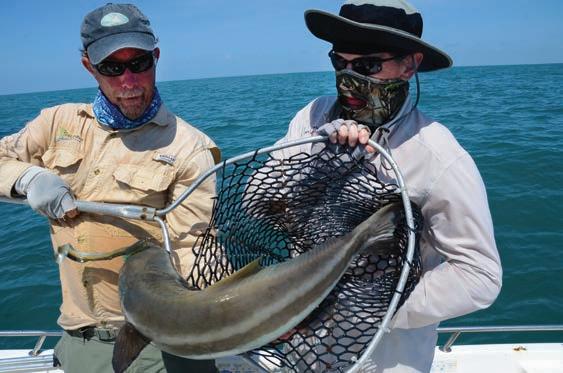
inshore stock that spawns in the bays, versus an offshore stock. With different genetics. Mississippi’s tagged fish wander the Eastern Gulf from Louisiana to the Florida Keys. Texas and West Louisiana obviously share fish at Sabine Pass that perhaps migrate further down the Texas coast. South Texas ling from Aransas to South Padre might be a separate stock that mostly refrains from visiting Mexico. Much work lies ahead, before details of the ling population can be ironed out.
Streich and his crew will be tagging ling this summer, and they’re looking for volunteers with boats to help, using the easy shoulder darts when they catch these fish. “We’ll send them four or five shoulder dart tags and the information card to fill out for each fish, says Streich. “We’ll contact them and send a tagging kit. If they use them up, we’ll send more.”
Here’s a link where volunteers can apply at: https://bit.ly/43CIEPk
JOE RICHARD
[Very dark in there.] It hasn’t really been estimated but the stock assessment goes by a five percent mortality rate for these fish that are released after being caught. Which seems low, because people sometimes gaff and release fish when they measure too small. [Or they don’t use a landing net. Or the fish beats itself up while on deck]. That five percent estimate is based on what the fish looks like when released, not what actually happens to them. These tags should let us know,” says Streich.
As with many things in nature, the cobia population is more complicated than earlier thought. In the Carolinas, they even have an
CONTACT
Joe Richard has fished the Gulf since 1967, starting out of Port Arthur, but his adventures have taken him up and down the entire coast. He was the editor of Tide magazine for eight years, and later Florida Sportsman’s book and assistant magazine editor. He began guiding out of Port O’Connor in 1994. His specialty is big kingfish, and his latest book is The Kingfish Bible, New Revelations. Available at Seafavorites.com


TSFMAG.com | 29
Author on the left admires a ling before releasing it. The big, rubberized landing net doesn’t harm the fish.
 One of Pam Johnson’s dozen or more bull redfish this day…and that’s no bull!
One of Pam Johnson’s dozen or more bull redfish this day…and that’s no bull!

TheThrill of Bull Redfish
STORY BY EVERETT JOHNSON
PHOTOS & VIDEOS BY DANNY MCGUIRE
What’s the biggest redfish you’ve ever landed? Does a thirty-pound forty-incher sound exciting? What if I told you of an almost surefire guarantee to land a dozen or more this size and larger in a single morning? You might be thinking I’m either the biggest liar you’ve ever met or I’ve got a screw loose upstairs. But hold on…
This is not an exaggerated fish story; it actually happens with regularity, and I’m about to tell you how you can get in on the action.
It happens at Port O’Connor’s Matagorda Ship Channel Jetties several days during new and full moon periods – May through October. I suspect it also happens at other jettied passes such as Sabine, Galveston, Matagorda, and Port Aransas, although we have never tried our luck at any of these.
The primary key to this incredible fishing is strong incoming tides, which peak in strength during the moon phases mentioned. It’s also all about the smorgasbord of bait fish being swept in from the Gulf on these tides – namely menhaden and ribbonfish. This happens most reliably during the warmer months when these species are in greatest abundance in nearshore waters.
Getting in on the action is really quite simple: Launch at Port O’Connor at first light and head for the jetties – motor upcurrent between the jetties on the inshore side – leave your outboard motor running but slip it into neutral – allow your boat to drift with the current. It’s rare that you’ll be the only boat present, so just watch what others are doing and follow their lead.

Here’s Your Sign!
When it’s on fire there’s usually a ton of gulls, pelicans, and even frigate birds wheeling and crash-diving directly above schools of bull reds and jack cravelle hustling bait to the surface. Where to cast a bait or lure is a no-brainer during surface frenzies. Hookups can be instantaneous when they’re on top.
When the fish are not busting the surface they can often be found with the aid of a sidescanning depth finder, like the Humminbird Solix we use. Once schools are located, either suspended or near bottom, it’s a simple matter to lower bait or lures to that depth. It usually doesn’t take long…so hold on to that rod!
Pretty near any live or dead natural bait will draw strikes. Frozen baits like cigar minnows and sardines are popular but we prefer the artificial route. Spro Bucktail Jigs are our favorites, four and five ounce sizes are very effective for getting down to the fish in the strong
TSFMAG.com | 31

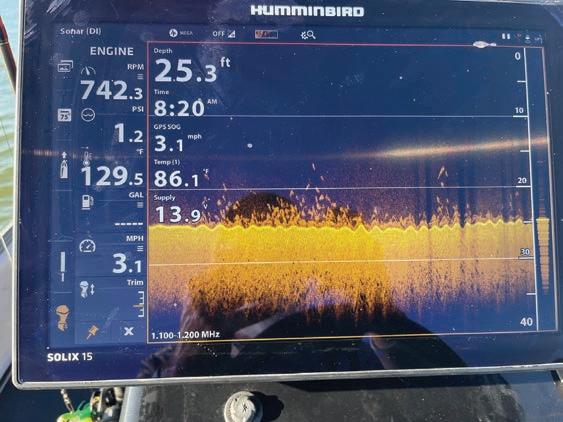
current. While these jigs can be effective right out of the package, tipping them with ultra-tough ZMan 7-inch DieZel Minnows and DormatadorZ Curly Tails elevates them to pure dynamite. A discussion of the proper tackle is in order here, and wimpy trout gear just doesn’t cut it. These are big, strong fish and they can completely strip all the line from a 100 or 150-size baitcaster in a matter of seconds. We recommend 400-size baitcasters and 4000-size spinners (at minimum) spooled with 50-pound braided line. Even if you might be capable of whipping a bull or jack on trout tackle, the prolonged fight and exhaustion they suffer is akin to a death sentence, and releasing them in healthy condition should be a priority. More on this later…


As for rods, we recommend 7-foot medium-heavy and heavy power rating, with fast-action for lots of backbone at the tip. Rods of this caliber greatly enable steering these fish boatside, when they’re likely to make a last-ditch run, under and around the outboard motor. Simply put, don’t go bear hunting with a BB gun.
Terminal tackle should also be 50-pound class, or better. We have found it best to run several feet of 100-pound monofilament leader (minimum) between the braid and the lure, or hooks, with at least one quality swivel. Treble hooks are not necessary, either with natural bait or lures. Strong single hooks are easier to remove and likely to cause less injury to the fish…and the person removing them.
Let’s move on to conservation of these great fish we are targeting. They are breeding stock, the backbone and future of the fishery. As such they deserve our absolute best effort in accomplishing healthy releases. This begins with getting them landed quickly. They should never be gaffed; we use large, long-handled

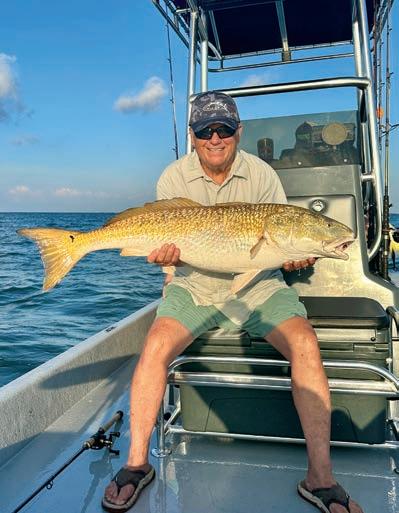 It’s not exactly as easy as falling off a log… but even gray-bearded editors can do it.
When they’re not bustin’ the surface in a feeding frenzy we find them suspended with the help of our Humminbird Solix.
The right class of tackle with the right lure – Penn Squall loaded with 50-pound braid, custom 7-foot medium-heavy rod, 4-ounce Spro Bucktail tipped with ZMan DormatadorZ Curlytail. Gets ‘em every time!
Just about any natural bait and a variety of lures will hook a bunch of bulls, but over the years we’ve dialed into this trusted combination of Spro jigs and ZMan plastics.
Joe Meyer had a great morning; said wrestling six bulls was plenty enough for anybody.
It’s not exactly as easy as falling off a log… but even gray-bearded editors can do it.
When they’re not bustin’ the surface in a feeding frenzy we find them suspended with the help of our Humminbird Solix.
The right class of tackle with the right lure – Penn Squall loaded with 50-pound braid, custom 7-foot medium-heavy rod, 4-ounce Spro Bucktail tipped with ZMan DormatadorZ Curlytail. Gets ‘em every time!
Just about any natural bait and a variety of lures will hook a bunch of bulls, but over the years we’ve dialed into this trusted combination of Spro jigs and ZMan plastics.
Joe Meyer had a great morning; said wrestling six bulls was plenty enough for anybody.
32 | July 2024
Double and even triple hookups are common!
landing nets made of rubbery fabric for scooping them aboard. Keep your pliers and camera at the ready and strive for quick photo shoots. The sooner you can get them back in the water the better.
One of the best ways we have found for successfully releasing them is a strong, headfirst thrust straight down into the water. Then keep an eye on them. Any fish that returns to the surface needs quick attention, not only to revive it but to avoid shark predation. If this happens, place a gripper tool on its lower jaw and hold it upright. Slip the motor in gear at idle speed and trail it alongside for a few minutes. This method forces lots of water through the gills. Their tail thrusts will tell you when they’re ready to go.
Now a short discussion about safety. This should apply everywhere but do not tempt fate by going in marginal weather conditions. This is big water out at the jetties, waves can be dangerous and the currents are surprisingly swift. There will likely be quite a few boats nearby, so a designated driver who remains vigilant at the helm is always a good idea. And always remember you are fishing a ship channel; large vessels throw large wakes… give them plenty of space.
So there you have it; Bull Red Jetty
Fishing 101. Always remember to be a good sport and respect your fellow fishermen. Practice good conservation, be safe, and get out there and have fun.
I told you in the beginning this wasn’t going to be an exaggerated fishing story, so there!

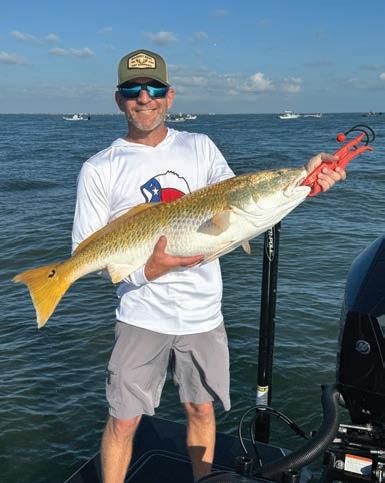
 Jason Shive got into plenty of action the morning he joined us.
Jason Shive got into plenty of action the morning he joined us.
TSFMAG.com | 33
Beautiful bull for Matt Watson!
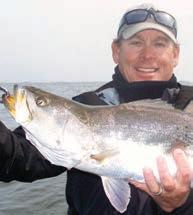

JAY WATKINS ASK THE PRO
LEARNING TO IDENTIFY THE STRIKE ZONE
Do you remember when John Madden retired from coaching and became a football broadcaster? He was great at breaking down the plays on both sides of the ball. His Wham and Bam antics were awesome and very entertaining to watch, and they were also extremely accurate. Tony Romo to me is not John Madden but he is extremely good at breaking down the offensive strategies. I know, what does this has to do with me and my fishing? Honestly, I am very similar with the antics and the colorful play by play when coaching anglers to better ways of doing what we do.
I found myself a few weeks back instructing a group of guys in the John Madden manner. “See the grass edge? We wanted to cast just up on the shallow grass edge and short-twitch the lure to where it falls straight down the drop-off. The drop-off is shallow, so it won’t
take long to get the lure down into the strike zone. Now, short twitches, almost like you are lightly vibrating your rod tip, allowing the lure to barely dust the bottom.”
I almost wished I had been able to draw the process up for them on a dry erase board. Drawing the grass edge, the potholes, the scattered grass beds, current and wind directions, and the position in which the fish were staged. I am sure in today’s high-tech world I could get a program that would allow me to draw this on the screen as I talk about such things in my seminars. It is vitally important when working such a pattern that we stay back as far away as we can from these specific structures. Accurate casts to the structure is primary key to success.
Breaking down the pattern for each day or season will remain one of the most important aspects of

34 | July 2024
Drew Donaldson in redfish mode.


$1,000
$750 Trout Table
$500 Flounder

ReservedSeatingfor8,Tablegifts,program mention
ReservedSeatingfor8,Tablegift,program mention
ReservedSeatingfor8andProgrammention
CUT HERE AND MAIL F R I D A Y , A U G U S T 9 , 2 0 2 4 | 6 : 0 0 P M
TX-35
77979 7TH ANNUAL
PORT LAVACA $ 1 , 0 0 0 B U L L R E D T A B L E
Bauer Community Center 2300
| Port Lavaca, TX
CHAPTER BANQUET
$ 7 5 0 T R O U T T A B L E
$ 5 0 0 F L O U N D E R T A B L E
$ 6 0 I N D I V I D U A L T I C K E T $ 3 5 Y O U T H T I C K E T ( 6 - 1 7 )
cateredby Cathy's, drinks, auctions, Sportsman's Raffle
goodoldfundraising fun!
Join us for a night ofdinner
and
Bull Red Table
Table
Ticket Qty. Qty. Qty. Qty. Qty. Price Price Price _ Price Price Table Name__________ Total Amount Name Email Address Phone Credit Card_______ CVC Exp. Date Signature Checks payable to Coastal Conservation Association | Mail form & money to: CCA Texas, Attn. Carson Vecera, 6919 Portwest Dr, Ste 100, Houston, TX 77024 TICKETS ALSO AVAILABLE AT www.ccatexas.org/events/2024-port-lavaca-banquet For More Information: Carson Vecera 713.626.4222 | cvecera@ccatexas.org
$60 Individual Ticket $35 Youth
fishing. I am not sure we can learn this in any other way than just getting out there each morning and allowing all the conditions of the day to show us where we need to start. As we get into a period in early summer when winds could begin to give us small windows to fish some more open water structures, it will still be important to be able to break down and analyze each structure.
Mid-bay and barrier reef structures, along with shallow sandbars that run between spoil bank and island land masses are some of my favorite types of structure to target when weather patterns allow. Not to get too far off track, but the continued protection of our oyster reefs in the Aransas Bay complex is critical to the overall health of our bay systems and their residents.
Wind-driven as well as tidal currents play a large role in the way we approach and fish these areas.
I prefer small shallow bellies and even shallow passes through the reefs when I can find reef structures that allow for this. It is obvious that we want to fish reef points or points on sandbars. Points force water movement, no matter whether wind-driven or tidal current to flow around them. The water movement forces bait fish into smaller strike zones, making it easier for fish to feed and acquire a meal.
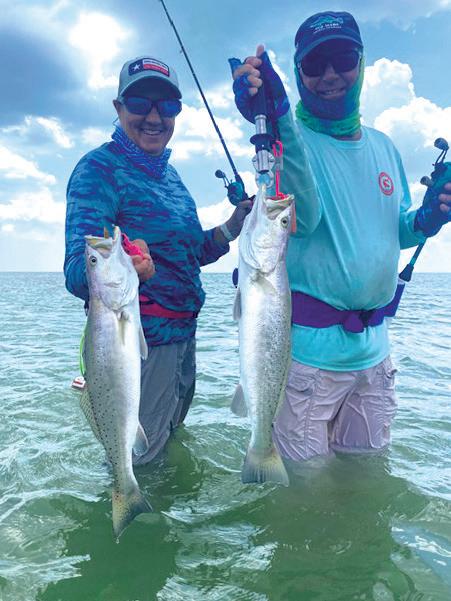

In my experience, the larger predators will stage either up-current or upwind. Trout and redfish are broad-tailed and more proficient in their mobility through moving water versus forked-tailed species such as mullet and menhaden. When I am looking for points or passes in reefs or sandbars, I also look for bait and bird activity. Pelicans, gulls, and even terns can signal us to bait fish that are not being seen until something forces them close enough to the surface for the birds to swoop in. Current can bring the bait close enough to the surface for birds to feed on them as well and even this will be a sign that game fish are close by. I would even go as far to say that the type of noises that gulls and terns make when communicating with one another is a clue to bait being present. I don’t speak bird, but certainly wish I did. I do, however, recognize these sounds and continue to use them to establish areas holding the proper bait and possibly the best fish for that day. I will also say that I am very skeptical about even getting out of the boat when I am not seeing or hearing the right things from my bird friends. One of the best things about the amount of wind we experience
along the middle and lower Texas coast is the fact that the wind moves the water for us probably more times than the tides do during daylight hours. Never believe that fish feed only during the times posted on Solunar Tables.
Predators are highly opportunistic and therefore not likely to pass an easy meal, which the wind can provide through the water movement it creates.
Over the past several years, the commercial harvest of oysters has eliminated a bunch of areas that I once depended on. New regulations were put into place for the sanctuary reefs of the Second Chain of Islands, Ayer’s, and Beldon’s. Cedar and Carlos are already beginning to show recovery but it is going to take some time for what I refer to as the backbones of these reefs to fully rebuild. The taller the backbone, the more protection and water movement there will be through and around the reef structures. This is excellent for fishing and will also provide protection from erosion along our barrier island shorelines. Another benefit will be improved growth in bottom grasses that provide critical habitat for the entire marine food chain. Apologies for getting off track, but these topics are very dear to me.
I like to position up-current or upwind of passes or points on the structures we are talking about in this article. This allows the current to bend or sweep your presentation more naturally into the strike zone. I know, you’re probably thinking, so where’s the strike zone?
Locating the strike zone is always the hardest part of the process for many that don’t get the opportunity to fish water moving around structures every time out.
What I’m describing here is the small area within the flow of water where small eddies occur, and/or where the water movement slows slightly as it sweeps around the point. I watch my line and the lure for that slight hesitation in movement to establish the zone. If lucky, we get a bite on the first cast and the work is cut short.
I always instruct those fishing with me the importance of creating the least amount of noise possible as we move into position to begin the process of locating the zone. It is so easy to push too close or allow a good fish to pull you too close. Once the zone, drift, and presentation are established we can then apply this knowledge to other areas on similar structure wherever we might be fishing. The truth is we can apply what we learn in Aransas Bay to areas all up and
Allyson and Drew Donaldson doing the Rockport trout thing.
36 | July 2024
Jay’s starting lineup for clear water conditions.
down the Middle and Lower Texas coast. For years I have had ten or more members of my Fishing Club that never fish in the Rockport area, but use the updates I put out on similar areas of structure in their respective areas. I guess it works because they have been members more than fifteen years.
I throw soft plastics when fishing the small passes or breaks in reefs and sandbars, and I prefer the Texas Custom’s 1/16-ounce 2/0 jigheads for this application. This jig does not hang up as readily as others, and when it does you can thumb the spool with the rod pointed straight at the lure and it will usually roll off the snag with steady pressure. Please, just break it off if it won’t come loose. All that you are likely to achieve by walking closer to free it will be ruining the fishing in that spot.
What about the Double D or Custom Corky Soft Dine when fishing the areas I have been describing? The Soft Dine is more susceptible snagging, whereas the Double D floats upward in the water column, making it more user-friendly in this situation. Water color will determine the colors we use but you cannot go wrong with anything white, plum, root beer, bone pistachio, or watermelon.

View The Video
Open Camera and hover over QR Code. When link appears at top of screen tap to open in YouTube.
I also want to remind all of you to get in the habit of inspecting your leader often throughout the day. Our main line and leader are the main link between us and the fish. I typically use 36- to 40-inches of leader material, and I personally prefer monofilament over fluorocarbon leader in most situations. I like the ability to tighten my drag and allow the stretch of my mono leader and action of my rod to absorb the shock of heavy headshakes and runs during the battle with larger trout. I use Osprey Premium Mono for my leader material and my motto for maintaining it in good condition is… If in doubt, change it out.
Hopefully by the time this article is published we will be seeing milder wind and you’ll be able to fish some of the structures types I have discussed here. As always, keep only what you need and release the rest.
May Your Fishing Always Be Catching -Guide Jay Watkins
Jay Watkins has been a full-time fishing guide at Rockport, TX, for more than 45 years. Jay specializes in wading yearround for trout and redfish with artificial lures. Jay covers the Texas coast from San Antonio Bay to Corpus Christi Bay.
Telephone 361-729-9596
Email Jay@jaywatkins.com Website www.jaywatkins.com


CONTACT
TSFMAG.com | 37


BEST OF BOTH WORLDS
This morning I stepped outside to take care of a few small chores around the house before coming back inside to write this article. No sooner was I back inside when I realized I was drenched with sweat and needed a shower. The chores hadn’t been all that physically demanding, which served as a quick reminder that summer has arrived!
Even though summer’s heat is not my favorite thing in the world, I still find joy during this time. One of the aspects that I heartily enjoy is the amount of daylight that we have. Even if you skip the middle of the day to dodge the heat for a couple of hours you still have plenty of time before and after to accomplish a task. It just so happens that if your task is to go fishing that day, well… you’re in luck!
Accompanied with the long days comes the perfect weather days. These days usually arrive with a nice north breeze that will bring cooler temperatures, blue bird skies, and a calm surf. Typically you can get three ideal weather days during one of these stretches, however, when Mother Nature is kind it can last up to a week. Long about the beginning of May I begin to study long-range forecasts weekly with hopes to see a high pressure ridge
moving south. Now, with July almost here, I do it daily. When we are blessed with these windows the fishing opportunities are almost endless.
One of my favorite things is the opportunity to have multiple options during a full day of fishing. On one hand, the marsh fishing should be on fire by now. There should be plenty of grass in the back ponds and that is almost a guarantee of clear water. Top all of this off with a full day of sunlight and light winds, and you have the perfect recipe for sight fishing. On the other hand, the jetties are now calm enough that you can make it out safely in a small skiff.
As daylight approaches, the trout fishing should be as good as it gets along the rocks. Once that bite begins to taper off, one can begin to target redfish and hopefully hang into a few bulls. After the sun is well up you can head out towards the beachfront and begin to look for tripletail floating amidst the sargassum. If you’re really lucky you might even stumble upon a group of bull reds or jacks cruising along the beach. With all these options available it can be tough sometimes to zero in on what you want to accomplish first. So, it begs the question; Why not just do it all?
DAVE ROBERTS SHALLOW WATER FISHING
38 | July 2024


“We contracted the construction of the TSFMag office building with Farrell Jackson. Jackson also built my son’s bay house here in Seadrift. We were completely satisfied with both projects…a professional and trustworthy contractor.” ~ Everett Johnson | Editor/Publisher, TSF Mag





Call us for custom buildings and homes on your own property! 361-576-3825 Office | 361-576-3828 Fax 36 Hunters Circle, Victoria, TX 77905 www.RafterJConstruction.com Barndominiums • Metal Buildings • Boat and Mini Storage • Metal Frame Homes • Commercial Buildings
TSFMAG.com | 39

A full day of fishing may not be for everybody and it definitely requires a little more planning than normal. One must pack extra refreshments and this is usually the only time I will bring food on the boat; a pack of crackers or bag of chips hardly qualifies for an all-day adventure. I have also been bringing packs of Liquid I.V. or other hydration packs to help replenish any lost electrolytes. You also need to consider boat refueling options. If there will not be a full-service boat ramp along your intended route, carrying an extra five gallons aboard is a must.
Arriving to the jetties, I will first look for clues as to what the tide is doing. If it’s incoming it’ll be flowing in from the gulf, whereas an outgoing tide will be running toward the gulf. Whichever way it is flowing you want to be on the down-current side of things. It is best to find areas of rocks that are low-lying, where water is flowing freely across. I like to start off by throwing a Spook Jr. If that doesn’t draw any reaction I will switch to a Down South or Chickenboy plastic on an 1/8 oz jighead. The important thing is to move slowly along the rocks. But, the first positive reaction from the fish is your signal to stop right there and begin casting more thoroughly among the rocks. With the sun rising and the trout bite fading, I will switch tactics and begin targeting redfish. My favorite setup for jetty redfish is a 1/2-ounce Texas rig, the same as you use for bass fishing. This consists of a 1/2-ounce bullet weight threaded onto my braided line, followed by a 5/0 offset widegap worm hook. I complete the rig with a white 4” Gulp shrimp. I prefer the offset hook so I can rig it in weedless fashion to avoid hanging up on the rocks. I pitch it into every little crevice and drain along the rocks, dragging it slowly

View The Video
Open Camera and hover over QR Code. When link appears at top of screen tap to open in YouTube.
Finally Some North Wind for the Upper Coast

down the slope, bumping each rock as it falls. The more rocks I cover in this fashion the greater the number of fish that are likely to see my lure. Most importantly, you must be able to feel the lure bumping the rocks. This is where the redfish like to be!
By now it is late morning and the sun should be high enough in the sky to do some sight fishing. I will usually head back to the ramp around 10:00 or so, load the boat and head for another boat launch that will put me closer to the marsh. This is an opportunity to refuel if you’re not carrying extra gasoline onboard and grab anything else I might need from the store.
Once I get to the marsh I do a quick re-rig, removing the bullet weight, and re-tying the same worm hook. One of my favorite lures for marsh sight fishing is the Stanley Ribbit Frog, and again I rig it weedless. On my second rod I will go with a trusty 1/4-ounce weedless Johnson gold spoon. This, tossed under a bright sky, will make an irresistible treat for a hungry redfish. I will spend the next few hours looking for the glow of redfish in the shallows of the marsh.
Long about the time the sun begins sinking a little low in the sky is usually my cue that I have spent enough time on the water. A full day of fishing will take it out of an angler, especially during the summer months. However, as diehard anglers, we don’t get many opportunities during the year to take advantage of every aspect of our fishery in a single day. When Mother Nature aligns with our interests you have to take advantage of it.
Be safe on the water this summer. And when Mother Nature and the weatherman get their acts aligned, get out there and enjoy the best of both worlds!
CONTACT
Dave Roberts is an avid kayak-fishing enthusiast fishing primarily the inshore Upper Coast region with occasional adventures to surf and nearshore Gulf of Mexico.
Email: TexasKayakChronicles@yahoo.com Website: www.TexasKayakChronicles.com
40 | July 2024







TSFMAG.com | 41
 By Shane Bonnot – CCA
Director
By Shane Bonnot – CCA
Director
CCA TEXAS ADVOCACY UPDATE
Some developments are unfolding on various items that have strong potential to influence fisheries and habitat, some at a snail’s pace and others seemingly moving at lightspeed. CCA Texas remains vigilant, actively monitoring crucial matters impacting the sustainability of our coastal resources. We would like to take this opportunity to spotlight some key issues currently on our radar.
LNRA WATER USE PERMIT – WRPERM 13728
The Lavaca-Navidad River Authority (LNRA) has applied for and received a draft permit to divert 30 billion gallons of water annually from a designated reach on the Lavaca River for industrial, municipal, and mining purposes across several counties within the Lavaca River Basin, as well as the Colorado-Lavaca and LavacaGuadalupe Coastal Basins. The permit would enable the LNRA to construct and maintain a dam and reservoir impounding 240 acre-feet of water on the Lavaca River and grant authorization for the use of the bed and banks of the Navidad River (Lake Texana) to convey the diverted water and/or store it in a proposed 16 billion gallon off-channel reservoir. CCA Texas has requested that the Texas Commission on Environmental Quality (TCEQ) provide the public with a comprehensive overview of the permit by holding a public meeting. This meeting will be instrumental in presenting detailed insights into the environmental and ecological impacts expected from the proposed activities.
In addition to the request for a public meeting, CCA Texas has filed a contested case hearing request on this permit to address grave concerns that the LNRA and TCEQ have not identified and adequately addressed the full scope of the proposed appropriation and draft permit. Concerns include but aren’t limited to the amounts, timing and diversion point or points of the proposed appropriation, the diversion dam, the off-channel reservoir on the freshwater inflows to the Lavaca Bay, and the freshwater/saltwater interface, and have not meaningfully addressed the resulting impacts on fish, oysters and other aquatic species dependent upon the Lavaca River, Lavaca Bay and the associated coastal ecosystems.
In addition to the CCA Texas contested case hearing request, there were 62 hearing requests submitted to the TCEQ, including requests from the National Wildlife Federation, Matagorda Bay Foundation,
Lavaca River Ranch, Hilcorp, and San Antonio Bay Estuarine Waterkeeper. To date, this permit application has received 118 public meeting requests, including requests submitted by State Senators Kolkhorst and Huffman, and State Representative Lozano. Follow the QR code if you would like to view all comments submitted to TCEQ on this permit.
MATAGORDA SHIP CHANNEL IMPROVEMENT PROJECT

The Calhoun Port Authority and Max-Midstream have been pursuing a project to address issues with the Matagorda Ship Channel. Constructed between 1962 and 1966, the Matagorda Ship Channel is an approximate 26-mile-long deep draft channel from the Gulf of Mexico to Port Lavaca. This project will address the channel’s insufficient width and depth, which limits vessel size and increases the potential for pilot error during times of high winds, waves, and shoaling. (Shoaling occurs when the channel naturally becomes increasingly shallow through the build-up of sediment.) In addition, the width of the existing turning basin also limits vessel size. The objectives of the Matagorda Ship Channel Improvement Project are to: Increase port efficiencies and reduce transportation costs; utilize dredged material beneficially to protect and/or restore significant ecological and historical resources; and reduce risks to life safety and local infrastructure. This will be accomplished by extending, deepening, and widening the channel to varying depths and widths.

CCA Texas has issued a statement on this project and is advocating for the wise use of dredge material for beneficial projects within Matagorda Bay to enhance fisheries, habitat, and coastal resiliency. Should the MSCIP move forward, dredge material should be used to provide ecosystem benefits on a landscape scale in Matagorda Bay. The USACE should utilize a suite of environmental restoration and creation features including in-bay marshes, beach nourishment, shoreline protection, oyster reef creation, and nesting shorebird habitat that will offset the negative impacts of this project.
Texas Advocacy
TSFMAG CONSERVATION NEWS
42 | July 2024


TSFMAG.com | 43
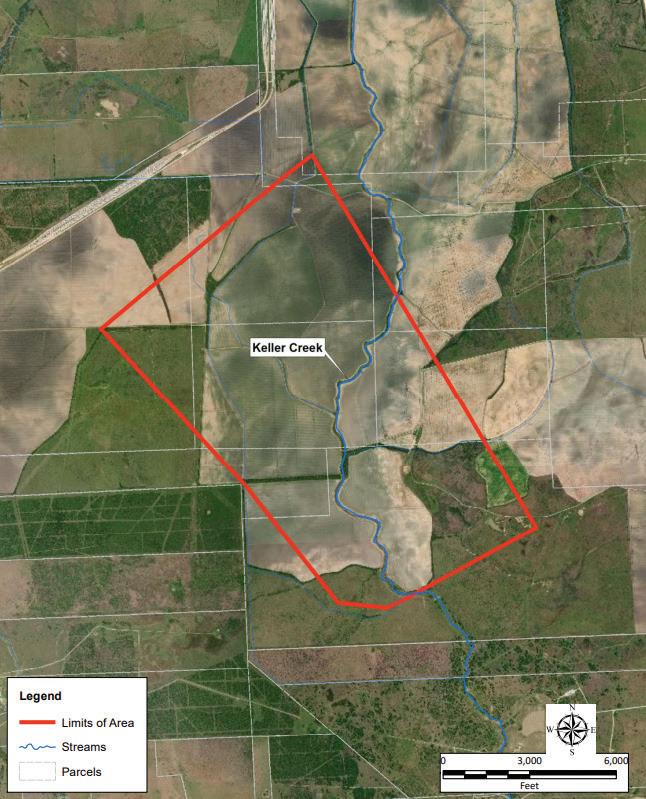
CEDAR PORT NAVIGATION AND IMPROVEMENT DISTRICT CHANNEL DEEPENING PROJECT
This project aims to assess the viability and federal interest in establishing a deep-water link between the Houston Ship Channel and a potential forthcoming deepwater terminal at Cedar Port Industrial Park. This initiative seeks to enhance navigation safety and efficiency in both the Cedar Bayou Navigation Channel and the Houston Ship Channel. The envisioned Cedar Port terminal offers an alternative facility to handle projected cargo volumes, mitigating congestion in the upper Houston Ship Channel and averting delays in cargo operations. As the non-federal sponsors under authority granted by section 203 of Water Resources Development Act 2022, Cedar Port Navigation and Improvement District is preparing an integrated feasibility study and environmental impact statement (EIS) for the Cedar Port Navigation District Channel Deepening Project.
During the scoping process for the development of this EIS, CCA Texas submitted comments expressing significant concerns for dredging impacts on fisheries and habitat, and if the project were to move forward, advocated for dredge material to be located within confined placement areas. Follow the QR code to view a map with proposed alternatives. Rest assured, CCA Texas will keep a watchful eye on this project and inform our members of opportunities to speak up for coastal resources.

Port Mission Plan outlines various projects aimed at enhancing global trade opportunities. With a total value of $9.67 billion, these projects include $4.34 billion for inland connectivity needs, $1.67 billion for port infrastructure investments, and $3.66 billion for federally authorized ship channel improvements. Of particular concern to anglers and residents of Port Mansfield is a proposal to repair a bulkhead near a 6-acre quelling yard to accommodate container vessels, potentially altering the tranquil nature of the port. The plan also envisions extending the airport by 1,200 feet to accommodate cargo aircraft and designating SH 186 and FM 1420 as heavy haul routes to support oversize/overweight loads. CCA Texas is closely monitoring these proposed initiatives and will engage with regulatory authorities once permit notices become available.
GULF COUNCIL JUNE MEETING


PORT MANSFIELD CONTAINER PORT
The 2024-2025 TxDOT Maritime Division Texas
The Gulf of Mexico Fisheries Management Council (Gulf Council) is scheduled to meet in Houston Texas, June 24-27, 2024 at the Omni Houston Hotel. CCA Texas is encouraging members to attend the event, particularly on Wednesday, June 26 th, to provide public comment to the Gulf Council. Be on the lookout for an email with more details.


CITY OF CORPUS CHRISTI DESALINATION PLANT –INNER HARBOR
Per notice of application and preliminary decision for TPDES Permit Number WQ0005289000, the City of Corpus Christi proposes to operate a desalination facility in the City of Corpus Christi Inner
44 | July 2024
Harbor at the intersection of Nueces Bay Boulevard and East Broadway Street, with a discharge effluent in the Corpus Christi Channel, located within the Corpus Christi Bay ecosystem. CCA Texas opposes TPDES Permit No. WQ0005289000. CCA Texas recognizes that sound desalination technology is crucial in securing dependable freshwater sources for Texas but accepted marine science mandates that the intake and discharge points be located offshore to minimize impacts to the estuary. For any operation to be considered, we offer the following recommendations:
• Intake and Discharge points should be located in offshore waters to minimize the impacts on fragile ecosystems. • If possible, intake piping for any desalination plant should be installed below the seabed via directional drilling.
• Site-specific studies of conditions at proposed locations should be conducted to identify environmental impact and risks to the ecosystem.
Implementing an offshore intake and discharge for a desalination plant offers several advantages, minimizing direct impacts on the ecosystem by avoiding the disruption of sensitive habitats and species within the estuary. Offshore intake also allows for the extraction of seawater from deeper and cleaner waters, and discharging the brine offshore disperses it in a larger volume of seawater, diluting its concentration and mitigating its impact on marine life and water quality in coastal areas. In summary, opting
for offshore intake and discharge for desalination plants provides a more ecologically sound solution while still feasibly addressing freshwater needs in Texas.
TAKING ACTION
As industrial development opportunities expand regionally and our state’s population continues to surge, CCA Texas members must remain vigilant to ensure the conservation of fishery resources and maintain access for anglers. Conservation and economic development can progress together, and our advocacy need not be a zero-sum game. We encourage you to actively engage in issues that impact the health and vitality of our coastal resources. Stay alert for updates in your inbox, CCA Texas CURRENTS, CCA Texas social media, and the CCA Texas website for opportunities to get involved. Thank you for being a CCA Texas member; we appreciate all that you continue to do for our coast. Cheers to a summer full of tight lines, big smiles, and good times with those who bring you joy.
YOUR #1 CHOICE FOR JIGS


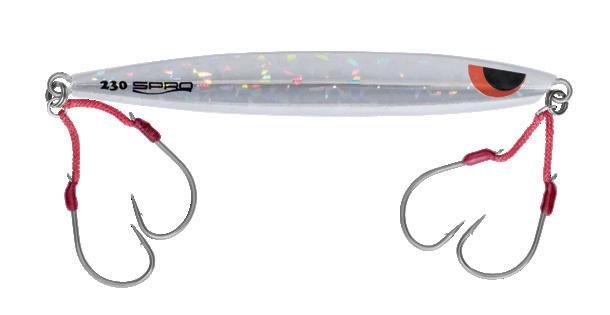




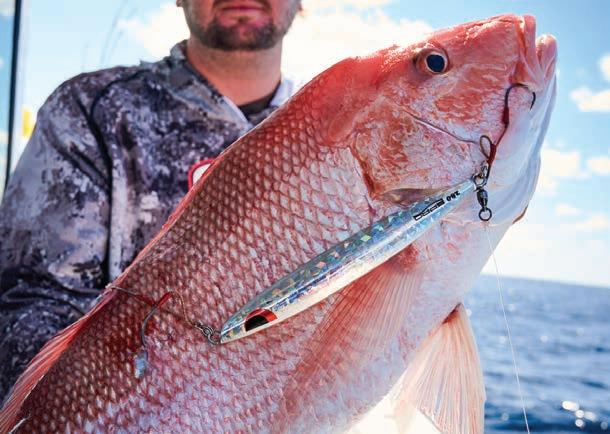
SPRO.COM + 8 more colors SHIMMY SEMI LONG Scan to learn more Shimmy Semi Long Scan to learn more Shimmy Flat TSFMAG.com | 45
 By TPWD Staff FIELD NOTES
By TPWD Staff FIELD NOTES
A TEXAS SIZED ACHIEVEMENT: ONE BILLION FISH STOCKED!
Introduction
The old adage, everything’s bigger in Texas rings true, especially when considering Fisheries Management in our coastal waters. The Texas Parks and Wildlife Department (TPWD) has a longstanding history of decisively implementing strategic management practices aimed at keeping fish stocks healthy and sustainable. Simply put, the end goal is to ensure that there are plenty of fish for Texas anglers, both present and future. However, with the seemingly endless list of factors that can negatively affect fish populations, this is no small task. Considering natural events such as freeze related fish kills, harmful algal blooms (red tide), droughts and floods, combined with impacts caused by humans, such as coastal shoreline development which leads to habitat degradation, pollution, not to mention increasing fishing pressure, the odds are not stacked in the fish’s favor. Fortunately for the fish and the millions of anglers who enjoy catching them, TPWD has taken bold steps to make a Texas sized impact.
One of those bold steps was the establishment of a large-scale fisheries enhancement program with the goal of increasing fish abundance by releasing hatchery produced fingerlings into the wild. These hatchery produced fingerlings are intended to supplement natural stocks, anytime reproduction or juvenile survival
is less than optimal. By providing an annual allotment of fingerlings for our bay systems, long term effects from natural or human caused fisheries declines can be mitigated. This proactive measure combined with fishing regulations guided by TPWD’s long-term fisheries monitoring program, work together to provide a stable and healthy fishery.
Texas Parks and Wildlife’s saltwater hatcheries have stood the test of time and proven to be a highly effective tool to maintain stable fish populations. This legendary program was born out of necessity, during perilous times for our Texas Bays. Adjusting to the needs of the ecosystem, over the years, the program has grown in size and number of species cultured. Through the decades, we have celebrated many milestones, but the grandest of all achievements was reached this summer!
History
In response to declining Red Drum populations in Texas, fundraising by the Gulf Coast Conservation Association (now known as the CCA) began in 1977 to fund a Red Drum fish hatchery. In 1980, plans were announced to build the world’s largest Red Drum hatchery at the Barney Davis Power Station, adjacent to the Upper Laguna Madre in Corpus Christi, Texas. The John Wilson Fish Hatchery was completed in September 1982 and
46 | July 2024
TPWD’s celebration logo for the 1 billionth fish stocked into Texas waters.
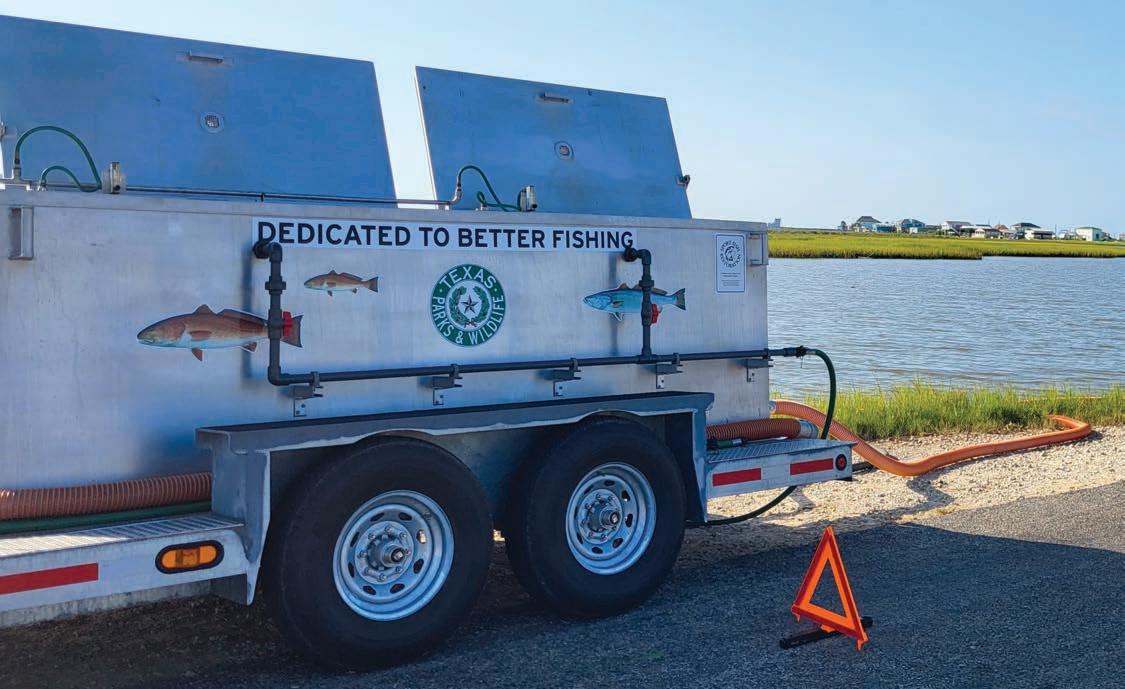
Texas Governor Bill Clements stocked the first Red Drum into hatchery ponds in October of the same year. The first Red Drum fingerlings were released near Port O’Connor in 1983 and in the following year, the first Spotted Seatrout fingerlings were produced in Corpus Christi. In 1987, a considerable donation was received to expand the hatchery adding an additional 24 rearing ponds and renaming the facility as the GCCA/CPL Marine Development Center (now shortened to CCA Marine Development Center). The first major production milestone was reached in 1992 with the release of the 100 millionth fingerling.
Building on the successes of the program, the research ponds at the Perry R. Bass Marine Fisheries Research Station in Palacios were moved into the fisheries enhancement program in 1993, and TPWD partnered with DOW Chemical and the CCA to build a new state-ofthe-art hatchery in Lake Jackson. The Sea Center Texas marine fish hatchery and Visitor’s Center was completed in 1996 and added an additional 36 one-acre production ponds as well as a free public aquarium to the program.
With three facilities in production, the program has the ability to be nimble and shift focus as needed to address the biological needs of the ecosystem. In response to declining Southern Flounder populations, experimental trials with Southern Flounder were initiated in 2006, and to date, we have released about 1 million flounder juveniles. In 2021, Spotted Seatrout production was ramped up to help populations recover from fish kills caused by Winter Storm Uri. Over ten million Spotted Seatrout were released, with almost three million being stocked into the Upper and Lower Laguna Madre, the systems that were most severely impacted. With three marine fish hatcheries spread out logistically along the Texas coast, TPWD was well situated to release more than 20 million fingerlings per year into our bays and estuaries, in support of our sportfish restoration efforts.
During the 2024 production season, in early July, the Texas Parks and Wildlife Department’s Coastal Fisheries Staff released the one-billionth hatchery-produced fingerling! With more than four decades of pushing boundaries, setting records, and unwavering desire to give back to the anglers of this great state, the Texas Parks and Wildlife Department couldn’t be prouder of this achievement. Our success is a direct result of the sustained beneficial partnerships with the Coastal Conservation Association, DOW Chemical, the Texas Parks and Wildlife Foundation, the S.E.A., anglers who’ve purchased their saltwater fishing licenses in Texas, and funding from the Federal Sport Fish Restoration Program (the Dingell-Johnson Act of 1950). If you are interested in scheduling a tour to learn more about TPWD’s saltwater hatcheries, or supporting our efforts through a tax deductible charitable donation visit https://tpwd.texas.gov/fishing/ sea-center-texas/.
Check the TPWD Outdoor Annual, your local TPWD Law Enforcement office, or tpwd.texas.gov for more info.
The major milestone
TSFMAG.com | 47
TPWD fish hauling trailer releasing fingerlings into nursery habitat near East Matagorda Bay.
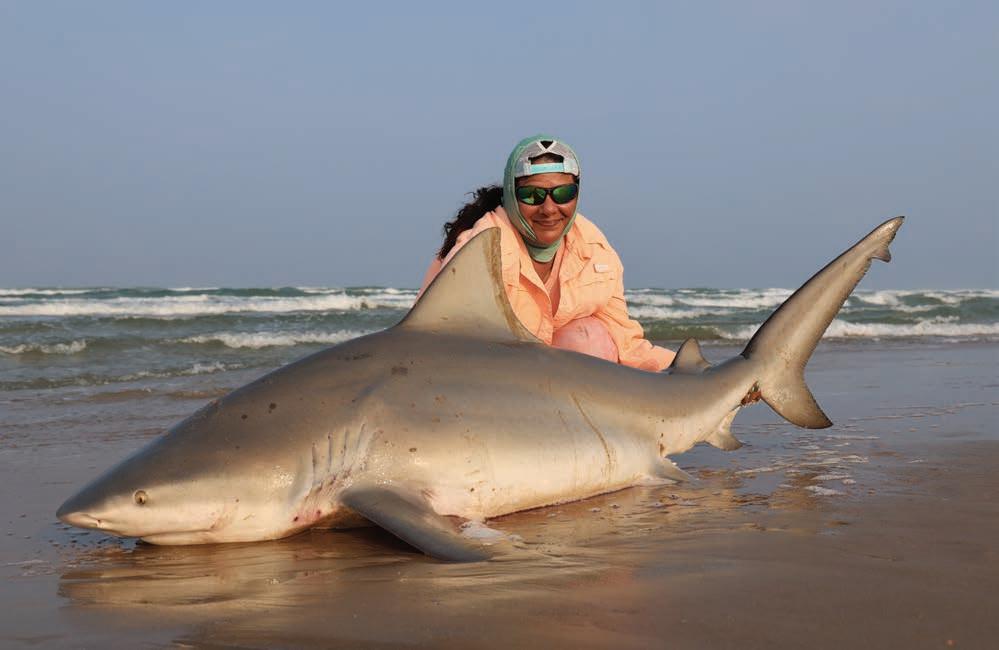

ERIC OZOLINS
EXTREME KAYAK FISHING & SHARKS FROM THE SAND
OZMOSIS
I came onto the sharking scene with great enthusiasm and quickly developed an addiction. When I first became obsessed with fishing from the beach, my heart and soul seemed connected with the mystical waters of the Gulf of Mexico. Over the last two and a half decades, I’ve spent more time on the sandy beaches of Padre Island chasing predatory sharks than anyone else. I feel blessed and grateful for the accolades and achievements credited to me. And I’ve come full circle, focused for the last decade on providing others with opportunities to battle our aweinspiring toothy critters.
When I was first introduced into the shark fishing world in the late 1990s, the internet was in its infancy. From the emerging technology, on sites like the one headed by David Williams, most of us learned our sharking fundamentals. Back then, most avid sharkers used tackle which now seems archaic. Penn

we go;
Senator reels, mostly the wide versions of their 4/0 and 6/0 models, dominated the creels of most anglers. While a dedicated few did target the larger sharks with 9/0, 12/0, or even 16/0 reels, most started out slightly smaller, properly learning the basics before diving in full-throttle. On their relatively light tackle, most budding sharkers fished with much smaller baits back then. Kayaking these diminutive baits beyond the breakers in both calm AND rough conditions generally yielded a wide variety of medium-sized sharks, satisfying most of the people. But as technologies enhanced the equipment used in the game, methods improved as well. About 15 years ago, workhorse lever-drag reels became more common, in particular the larger models. Combined with strong braided line, this allowed us to successfully target the biggest sharks in our waters.
These days, it sometimes
Silver Guerra with bull shark landed on Ozmosis rod.
48 | July 2024
Here
strapped up and hooked into a great hammerhead on a new Ozmosis rod.

Four Walls ESCAPE

Bay or Gulf, deep water or shallows, South Padre Island in the summer is an angler’s dream. Scan and plan the ultimate fishing escape today.








TSFMAG.com | 49


seems most of the hard work in the sharking game has been eliminated. Entry-level sharkers who have never held a fishing rod in their hands can buy all the top-of-the-line gear, even a drone, and have a chance at doing battle with giants, sometimes without even getting wet. While I have mixed feeling regarding this, we’ve undeniably entered a new, better era in Texas sharking. The old days of putting in so much effort just to deploy baits are over.
Adding to the positive trends in the sport, photos have become the most revered trophies sought by most of today’s anglers. Thirty years ago, large sharks landed on Texas beaches were rarely returned to the water. Sadly, people considered them disposable. The jaws of giants were often extracted, the rest of their remains discarded like trash. It’s pleasantly amazing how changes in attitudes can affect a sport, its methods and the fishery itself, all in one generation. On many of my recent charters, entire families arrive to fish, including young children. I take seriously the responsibility of trying my best to educate the kids about the ocean and the amazing life forms it supports. I enjoy seeing

the reactions of both the young and the old when they look a shark in the eyes and show respect to nature and the creature.
These kinds of joys are relatively new to me; I started at the ground level while building a life in this sport, making my own weights, leaders and fishing rods. Now, my hard work has paid off handsomely. About two years ago, Greg Ray, one of my clients and friends called and we started talking about rods. He reflected on when he had battled a big tiger shark with me on a charter one summer night, then asked, “If there were anything you could change about the blanks in the rods you use, what would it be?”
I had to think before I responded. I told him I liked the fantastic rods (mainly Jawbones) I use, and would make just minor tweaks to their action and balance.
Surprisingly, he asked, “What if I could make that happen? What if you could design your own shark rod?”
Once again I had to think before I responded; this time I took a couple days to ponder the possibilities. Several days later, Greg called again and said he had succeeded in convincing one of the most reputable rod blank companies in the world to help us create my personal vision of a perfect, heavy, land-based shark blank. I felt honored to commit to the plan. From that point on, Greg and I worked with an amazing team. After a little more than a year of effort, thought and consideration of parabolic strengths and stress-testing, I approved the final design of the blanks, hoping to create a sturdy, balanced rod capable
 Oz selfie image while releasing hammerhead.
Rocky Guerra with bull shark landed on Ozmosis rod.
Butt section label, typical of the Ozmosis rod line.
Oz selfie image while releasing hammerhead.
Rocky Guerra with bull shark landed on Ozmosis rod.
Butt section label, typical of the Ozmosis rod line.
50 | July 2024
Ozmosis Rods logo art.
of withstanding the rigors to which we subject it. These blanks, in Standard Heavy and Extra Heavy power, have now been dubbed and branded as Ozmosis rod blanks.
These blanks rely on an unorthodox hybrid composition utilizing innovative modern technologies to serve as the spines for supremely effective 10’ shark rods. In essence, a lower portion of the blank is a heavy dense-wall graphite which merges precisely into a heavy glass section comprising the majority of the blank. Where and how these two materials merge becomes integral in the manufacturing process. The lower section provides less flex near the butt than conventional all-glass rods, but the blanks remain incredibly strong and sturdy. The design also frees the rear of the blank of a small amount of weight to help counterbalance the reel. After personally testing these rods for the past few months, I’m thrilled with the results. The first decent shark of the season battled on an Ozmosis rod was a respectable and healthy 10’ hammerhead, and the blank handled the fight flawlessly.
The Ozmosis rods were first released for sale to the public in May, at Breakaway Tackle in Corpus Christi. Nick Meyer was eager to get them in the shop, and his team builds them to their customers’ preferred specs. The series is also being introduced at Roy’s Bait and Tackle, another of Corpus Christi’s great tackle stores, one of the largest landbased shark fishing suppliers in Texas. They will soon have some of the blanks and a plethora of rod-building supplies to customize builds for people with the skills to wrap their own rods. People who don’t live near Corpus Christi can contact Mr. Ray of Salty Rods Enterprise at saltyrods@protonmail.com. Greg offers rod-building kits and build
sheets for sale and pick-up in the Houston area. Folks seeking a timely emergency purchase during after-business hours in the Corpus area can contact me directly to obtain a blank or two.
This is all fun for me. I’ve been blessed over the years with many great friends in the sport. They’ve made what I’ve done possible. I’ve generally been an experimental, self-taught, innovative angler. From my Catch Sharks leaders with one-of-a-kind Tru-Sand technology to the evolution of a modern brand of fishing rods, I’m always trying to keep up with the times, optimize the old, improve on the new and give something back to the fishing community. The fruition of the Ozmosis rods has been like a dream come true. They’ve already earned a regular place in my arsenal. Many thanks to Greg for making this all possible. I designed these rods from personal preference, and I’m not claiming they’re better than everything out there. But, I can attest these impressive tools are comfortable to use and fully capable of helping people win big battles.
CONTACT
For the past decade Eric ‘Oz’ Ozolins has been promoting shark catch and release and assisting various shark research programs. Eric offers guided shark fishing on Padre Island National Seashore. Also renowned for extreme kayak big game fishing, Eric is the owner of Catch Sharks Tackle Company.
Email oz@oceanepics.com Websites oceanepics.com | catchsharks.com

TSFMAG.com | 51
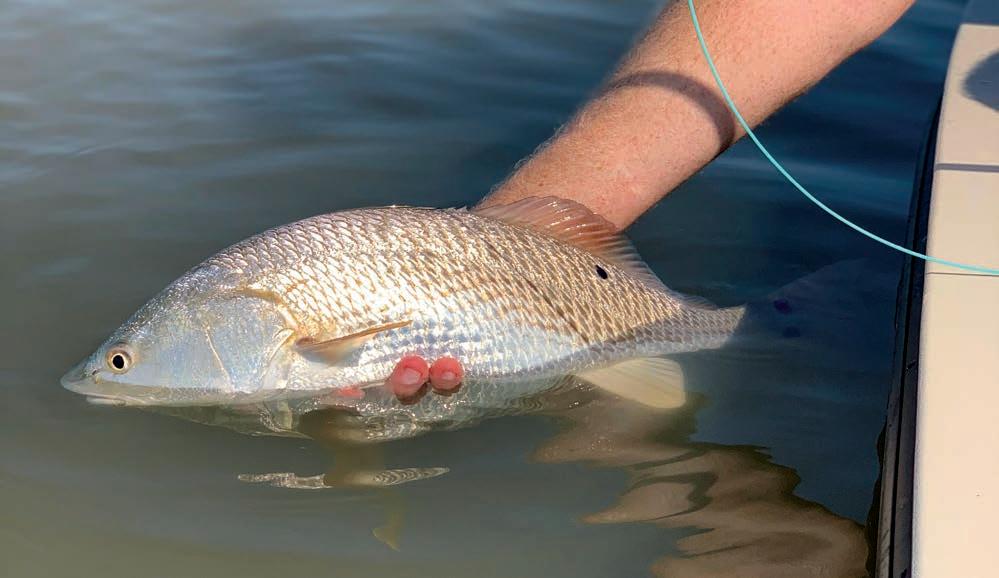
 JAKE HADDOCK MOSTLY
JAKE HADDOCK MOSTLY
SIGHT-FISHING
SUMMER STRATEGY
My, oh my, is there anything finer than summertime on the Texas coast? For a die-hard sight fisherman like myself I’m not sure there is. Yes, it’s awfully hot outside, but that big, beautiful, blazing ball of fire is what allows us to do what we do, and its intensity this time of year allows us to do it well.
One thing that seems to make July a great month for sight fishing is consistent weather patterns. We can only hope that’s what we see this year. Last July was definitely consistent, with excessive winds from the southwest and low chances of rain, but that’s not exactly our normal. The July weather that I know and love is variable winds at sunrise followed by an onshore afternoon breeze of 10-15 knots out of the southeast, and if you’re lucky, a small pop up shower to cool everything down. That paints a beautiful word picture doesn’t it? I thought so, too.
Another reason I enjoy fishing the summer season is the variety of opportunity

a day can bring. For starters, all inshore species are a possible target tight to the shoreline at first light. Stumbling into a school of jacks when crossing larger portions of the bay is also a possibility. Seasonable light winds also produce an opportunity for a small skiff to venture around passes and jetties, opening up another list of possibilities like bull reds, tripletail, cobia, and even tarpon. Any of the following make my day and are a welcomed break from the day to day of pursuing slot redfish on the flats. Don’t get me wrong, I will never grow weary of chasing our beloved redfish, it’s just fun to mix it up now and again.
A variety of species means a variety of tackle will be needed. The under-gunnel of my Sabine Skiff will often be loaded for bear this time of the year. It’s not uncommon for me to bring a 7,9, and 11-weight fly outfit, along with a couple of spinning rods and even plug rod if I have room. I’ve learned the hard way it’s better to be prepared on calm summer
52 | July 2024
Wide brim hats and hooded shirts are smart choices in July heat.


days because you never know where you’ll end up or how big the fish you might encounter.
Such was the case from the photo I shared in my March 2024 article with a customer holding a large jack crevalle landed on an 8-weight fly rod. The backstory is that we both had bigger gear in our vehicles that day but left it behind because the weather was a bit snotty starting off. Later, we found ourselves by the pass with ice cream conditions but didn’t venture out because we weren’t properly equipped. As we headed across the bay we stumbled into a school of large jacks and had to make do with the tackle we had aboard. It wasn’t ideal, and I can’t help but laugh looking back. The lesson learned is just bring the bigger rod, conditions change quickly out there.
It’s imperative to get an early start this time of the year to take advantage of cooler water temperatures. We often have a morning incoming tide on my part of the coast this month, and I like to take advantage of that in whatever back lakes have been holding fish. The incoming cooler water typically puts them in a happy feeding mood and will last for a few hours if I’m lucky. After the tide slacks and sun is up, the water gets stagnate and hot quickly. All hope isn’t lost, though, and this is typically when I’ll run for deeper water hoping to get a chance at some of the additional species we discussed earlier.
However, this isn’t always an option as sometimes the onshore winds may pick up a bit early, or there could be a thunderstorm nearby. In these cases I strongly urge you to not make a run to deeper water. The next best option is to fish shorelines with steep drop-offs that give fish quick access to deeper, cooler water. You can often find redfish, sheepshead, and black drum running these types of shorelines in warmer months. This is often a day saver for me as it doesn’t take much wind to discourage me from fishing deeper waters.
This brings me to reminding you that if you do plan to venture into deeper regions of the bay, nearshore, or even offshore in your flats or bay boat, please double check your safety equipment before doing so. When’s the last time you checked your bilge pump? Some
self-bailing flats boats may not have one, but most do. This is often the first thing to go out on a new boat due to the environment they live in. Upon flipping the switch to the on position, if the pump sounds weak, or not running like it did when it was new, just replace it. If you’re replacing this yourself pay special attention to the GPH or gallon-per-hour rating on the original to be sure you’re replacing it with one that has equal or greater rating than the pump you’re taking out. This may be tempting because the lower rated pumps are cheaper, but this isn’t the place to cheap out.
Also, consider carrying a marine radio as a backup form of communication. Yes, you should absolutely be in cell phone range, I wouldn’t recommend leaving cell range in a flats boat, but some days it’s just too tempting to do so when the gulf looks more like the Lake of Mexico. An important issue is that nobody rigs flats and bay boats with marine radios nowadays, and if you have a problem out there you can get into trouble quickly without ability to call for help. Handhelds are cheap insurance. I’ve been carrying a Cobra marine handheld radio for a few years now in my boat bag, and while I haven’t had to use it, I feel good knowing it’s there.
That about wraps it up for this month. Let’s pray that this July is full of calm seas and seasonably light winds, we’re certainly due for a good one. If going out on your own this month, pack adequate tackle and stay vigilant of any approaching weather. It can get ugly very quickly on those 100° afternoons. If going with a guide, tip well, it’s hard work out there in the summer heat.
Jake Haddock grew up in the back bays of Port O’ Connor where he developed a great passion for saltwater fishing. In his younger years he was a youth writer for this publication. In present day he enjoys guiding light tackle and fly clients in Galveston and occasionally Port O’ Connor.
Phone 713-261-4084
Email frigatebirdfishing@gmail.com
Website www.frigatebirdfishing.com
CONTACT
Typical July afternoon pop-up storm; anyone bring a rain jacket?
TSFMAG.com | 53
Dylan Motley with a dandy nearshore tripletail.
PRODUCT

Spro Swivel Bulk Packages
TKO Lures Spreader Bars
TKO Spreader Bars are arched to produce Super Flex, providing fish-attracting action. Spreader Bar will not dig into the water but works at the surface. Each end skirt has a snap to add small lures or natural baits. Center rear skirt has a heavier snap to attach rigged bait or lure (with hooks) by a #4 rubber band. Fish strikes bait, rubber band breaks, and the angler is fighting the fish separate from the Spreader Rig. Trailing the last bait 3 to 4 feet behind the main spread mimics a weaker bait that has fallen behind the bait fish school. Proven best baits are sardine size and blue, pink, and silver color.
www.TKOLures.com
These amazing swivels are made of high-grade stainless steel with a gunmetal black finish. They offer super smooth rotation and unbelievable strength and durability. SPRO Power Swivels are 1.5 times stronger than standard barrel swivels despite their tiny appearance. With their reduced visibility, they offer very little water resistance in trolling and are superb for finesse type fishing where stealth is the key. Excellent for use in rigs for kingfish, stripers, bass, salmon, and many more. Now is the time to stock up on SPRO Bulk Swivel packs and get what is needed for all your fishing this year. Head to your favorite dealer to stock up or you can order all your bulk pack needs on-line.
www.SPRO.com


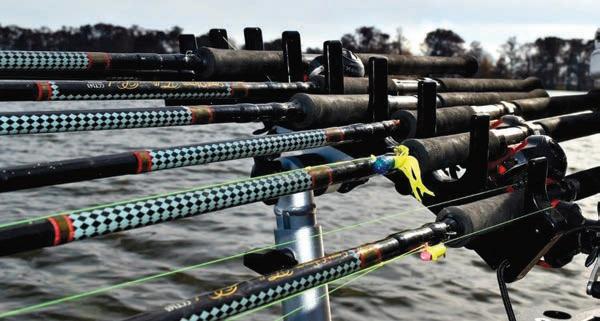

Millennium Marine Rod Transport Rack
When selecting a rod transport rack for any watercraft, consider the vessel’s size, available space, and the capacity to accommodate various rod types. Anglers need a rack that complements their boat and meets their fishing needs.
Millennium Marine’s R-300 Rod Transport Rack simplifies this choice. It’s heavy-duty, easy to assemble, and provides great value for any craft size. Ideal for group fishing trips, it features easy removal and secure lock adjustments with SpyderLok teeth.
The R-300, made of anodized aluminum, is versatile and lightweight at 11 pounds, assembling in 10 minutes. It transports up to eight rods and can be mounted vertically or horizontally. Quick adjustments and SpyderLok Technology ensure secure locking angles. It includes a 1-year warranty, making it perfect for multi-species anglers.
MillenniumMarine.com
54 | July 2024
HIGHLIGHTS
Huk Women’s Pursuit Cover-Up Dress
The Huk Women’s Pursuit Cover-Up Dress is the ultimate accessory for female anglers who prioritize style and comfort while on the water. Packed with impressive features, the Pursuit Cover-Up Dress ensures outstanding performance. With its 50+ UPF sun protection, hood, and adjustable cinchers, female anglers can confidently enjoy long days under the sun, knowing it protects them from harmful UV rays and maintains their unique style. Crafted from 100% polyester, the soft, anti-microbial fabric provides a flattering, non-cling drape, making lady anglers look and feel great. Mesh sides ensure breathability, keeping female fishing enthusiasts cool and comfortable while the moisture transport technology swiftly wicks away sweat. Thanks to Huk’s new Pursuit Cover-Up Dress, lady anglers can enjoy functionality and fashion without compromise. www.HukGear.com

Baumann Propellers
Baumann Propellers LLC has been in the marine propeller repair business since 1958. We also build custom designed propellers for shallow water applications. Baumann Propellers are built with thicker blades and made from harder material than competitors’ products. Three and four blade models are available to match the requirements of each hull and outboard application.
BAUMANN BULLETT 40-70 HP – BAUMANN BLASTER V4 & V6* –
BAUMANN LIFTER V4 & V6*
*Our V6 uses interchangeable Hub Kits
Baumann Propellers also offers first-class skeg and cavitation plate repair and replacement. All propellers are repaired as close to OEM specifications as possible. Call us for repairs and all your custom build needs. (713) 926-6908 - (888) 359-PROP - 2311 SSGT Macario Garcia Dr. - Houston, TX 77011
www.BaumannProps.com


The 21’ Stormcat is built on our most advanced big water platform for the ultimate experience for recreational as well as competitive fishermen. An aggressive hull with 18° deadrise allows you to cut through big water at speeds up to 55mph while maintaining the comfort expected from a world-class fishing boat. Stormcat’s massive 80-gallon livewell, rod lockers and ample storage make this boat a fishing platform that rivals any on the water. Thick, .250-gauge aluminum bottom and transom, along with .160-gauge aluminum sides and floor, make Stormcat one of the toughest on the water. Driver and passenger suspension seats, 70-gallon fuel tank, self-bailing front deck and wash down station are just a few of the standard features. Rated for 300HP!
For more information see ExcelBoats.com or visit your nearest dealer.


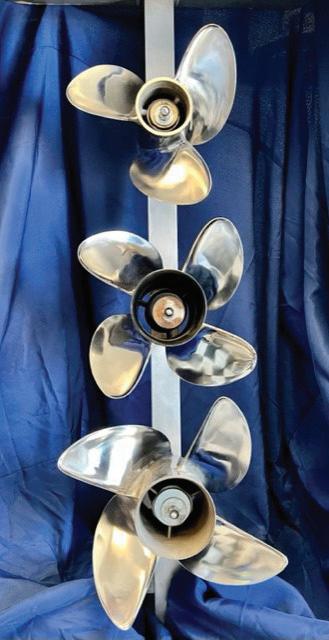 Excel Stormcat
Excel Stormcat
TSFMAG.com | 55
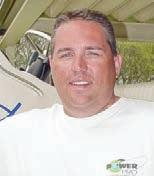
Matagorda
Bink Grimes is a full-time fishing and hunting guide, freelance writer and photographer, and owner of Sunrise Lodge on Matagorda Bay.
Telephone
979-241-1705
Email binkgrimes@yahoo.com Website matagordasunriselodge.com
THE VIEW FROM Matagorda
We take a different approach in July. Fish early, get off the water early. It has worked for us for years. That’s why we installed a pool at the lodge. We leave well before daylight and then cannonball in the pool when the mercury begins to boil.
July normally brings some weak cool fronts that knock down the humidity and flatten the Gulf of Mexico. We will work the surf and jetty on these days, concentrating in the first gut on the incoming tide and tossing topwaters on the outer bars on the falling tide.
When winds are light we also drift the middle of East Bay. Trout and redfish hang there all year, and slicks become more prevalent during July, especially for schooling redfish.
The mid-bay reefs consistently hold good trout in July. We start out in waist-deep water on the shell drop then end up in chest-deep water on the end of the reef as the water warms. Know your tides.
There have been many mornings I have arrived to find nothing, but patience prevails, knowing the incoming tide will bring fish to the reef. Slicks popping in deeper water adjacent to the reef are good signs.
Don’t be surprised to find birds working along the north shoreline with calm conditions. Since the ICW runs along the northern boundary of East Bay, those shrimp running the “ditch” often enter the bay on the incoming tide.
Likewise, the reefs along the north shoreline are a boon for waders tossing topwaters on the incoming tide. Never underestimate the cuts leading to the bay on the incoming tide as well. Those fish enter and exit the ditch daily through the cuts. There are some good trout on the shorelines for waders as well. Again, it’s usually an early bite with the heat. We find those trout over the grass early, then they fall along the ledge into about 4-5 feet of water later in the day.
wind. It is a tide-dropper and wreaks havoc on our water clarity. We just deal with it.
Some tides will be the lowest of the year, much like winter, so we take the same approach of winter and work the areas that consistently dump water and fish at low tide.
Offshore anglers will enjoy excellent red snapper action in 40-80 feet of water.
Tripletail action in the bay has been hit-or-miss thus far. Better catches have come on the weedlines just off the beach; and, more tripletail have been spotted in East Matagorda Bay in the past two years.
Expect kingfish, cobia and dorado to remain consistent over structure. Expect tarpon to show along the beach in late July. Legitimate 200-plus pounders were caught and released last summer. Please continue to take care of our fishery and release more than you take.
Catch and release really is cool!
Follow Matagorda Sunrise Lodge and Properties on Facebook and Instagram. We specialize in full service lodging for fishing, hunting, waterfront rentals, farm and ranch and coastal real estate.


Something we don’t like to talk about in July in the southwest

BINK GRIMES View The Video Open Camera and hover over QR Code. When link appears at top of screen tap to open in YouTube. 56 | July 2024

2-SPEED LEVER DRAG REELS
GEAR UP FOR SNAPPER SEASON
With the recent easing of restrictions on harvesting American Red Snapper in the Gulf, now is the perfect time to add the Alijos to your arsenal and optimize your snapper fishing success. Alijos 2-Speed Lever Drag reels bring you unparalleled engineering from the renowned Makaira Series. These reels are lightweight, compact-bodied, and designed to deliver ultimate strength and precision control.








| okumafishingusa.com SCAN FOR MORE INFORMATION
TSFMAG.com | 57
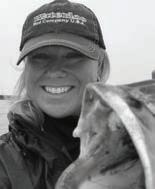
Port O'Connor Seadrift
Captain Shellie Gray was born in Port Lavaca and has been guiding in the Seadrift/ Port O’Connor area full time for the past 22 years. Shellie specializes in wading for trout and redfish year round with artificial lures.
Telephone 361-785-6708 Email bayrats@tisd.net Website www.bayrat.com Facebook @captsgaryandshelliegray
MID-COAST BAYS With the Grays
Summer is without a doubt the busiest season on the water. Boat traffic seems at least double compared with other seasons and I especially dread fishing on the weekends. At the same time though, I cannot blame all the folks anxious to get on the water and enjoy the great outdoors.
Summer fishing patterns are now in full swing and will likely hold until fall. So, with that in mind I am going to recommend a few strategies that might help you find success during this high-pressure, high-temperature fishing season.
Fishing has been very good lately with my go-to locations being mostly hard sand bottoms and oyster reefs. Water quality in San Antonio and neighboring bays has been very healthy lately due to some recent local rainfall and also more rain just north of us. Healthy water conditions help tremendously when it comes to all our game fish species but especially speckled trout. Speckled trout thrive best in stable salinity levels and we have been blessed in this regard through most of the spring and early summer season.
I know I probably sound like a broken record when I stress the importance of first locating bait when selecting an area to fish. Luckily, our bays and back lakes all hold abundant bait this time of year. You will see glass minnows, shad, mullet, shrimp, and more. So, finding bait is usually not a problem. However, the way that bait is acting is what will give you a better idea of what an area might provide.
I have pulled into areas with plenty of bait showing, thinking it might have potential, but after watching for a few minutes it’s easy to tell that it’s not actively jumping (fleeing predators) or acting nervous. As good as
it might look at first glance, this is a sign to move on to another area. Another great tip for this time of year is to pack your patience. If you find yourself fishing an area that often produces some fish, but maybe not as much as you had hoped for, stick with it a little longer. With more traffic on the water, you can figure you will only get about two good stops before nearly all the water will qualify as having already “been used.”
By this I mean that with the higher than normal traffic, more than likely, there will not be much water that hasn’t been fished by several other boaters before you get there. Catching can become almost nonexistent until the area and the fish have time to settle down and resume normal activity. This bit of advice comes from my many years of experience. I can’t tell you how many times in the beginning of my guiding career that I have been quick to leave an area that I didn’t think was producing enough…and later regretted my decision almost every time. Don’t be so quick to leave. Some days it is better to work for them than riding around from area to area.
In closing I feel I need to give readers a heads-up on something that is very concerning and has been occurring all too frequently of late. Every summer we see our fair share of sharks, even in very shallow water. This year I have been seeing more than ever before. Not only am I seeing more sharks than in years past, but some of these sharks are anything but bashful, and even downright dangerous at times.
On several occasions, both Gary and I have had too many aggressive encounters with some not-so-small sharks. They were determined to get the fish on our stringers no matter how shallow we were fishing. Their behavior is alarming because these sharks are not concerned about our presence in the least bit and, in fact, they are targeting us on our wades.
Please be super vigilant about wading this summer. Use long stringers and keep fish away from your body. Even fish bags aren’t safe from these aggressive sharks. If you see a shark feeding in your immediate area, don’t get comfortable thinking that they will move away once they see you nearby because honestly, that has not been the case.
I hope these tips help you become more successful in catching this summer. Please pack your patience, drink lots of water, cover up and wear lots of sunscreen. And always be aware of your surroundings!


CAPT. SHELLIE GRAY
Karen Petru was happy to show off her beautiful multispotted redfish.
58 | July 2024
Bo Craig assisted his in dad, Davis Craig, with landing his big catch.


TSFMAG.com | 59

Upper Laguna/ Baffin
David Rowsey has 30 years in Baffin and Upper Laguna Madre; trophy trout with artificial lures is his specialty. David has a great passion for conservation and encourages catch and release of trophy fish.
Telephone 361-960-0340
Website www.DavidRowsey.com Email david.rowsey@yahoo.com

@captdavidrowsey
HOOKED UP WITH Rowsey
Down time on the boat this morning gives me opportunity to work on my article. My clients are here for three days focusing on redfish with hopes of landing one with a STAR tag. While the odds are not that great they’re still better than hoping to win the lotto. It’s happened twice in the past on my charters so there is that slim chance it could happen again. Regardless, a dang good excuse to go fishing.
The summer jam on the bay has been lots of wind during June, mixed with a lot of hope that it will start letting up soon. It has definitely had a detrimental impact on fishing when it blows more 20 mph. In years past this has never been a big deal to me but we have a little something extra in the bay now, and that is brown tide. The water is tainted on even low-wind days, but structure can still be seen and catching continues. On a good blow we would call it trout green without the algae, still see our potholes, make good casts, and get hit. Now, that cloudy green color is more like coffee with a touch of creamer. Me, being out here every day, I know where the structure is even when I cannot see it, but extra casts are always part of the game when you can’t see a specific target. Utilizing lures with lots of vibration, rattle, and bright colors is almost essential on these days.
Outside of tropical storms, which are predicted to be numerous this summer, July conditions should be very stable, which should then translate into a more predictable bite. During algal blooms in years past the problem seemed to lessen the further we progressed into summer. In the case of a tropical event developing somewhere in the Coastal Bend, the surge of water from the Gulf of Mexico will almost always eliminate the brown tide.
Regardless of algae blooms and lack of clarity on windy days, locating fish will be like any other July with regards to patterns. Focusing on nighttime feeding areas (shallow flats) is always where we will park the Haynie on any given morning. Having quick access to deep water near those shallow feeding zones is always the best case scenario when fishing in the Laguna and Baffin. This has never been more prevalent than it is now as the trout seem to hit the deep stuff almost immediately upon the first sound of an outboard buzzing by.
I’ve discussed my thoughts on this with many seasoned anglers and most of us are on the same page regarding how quickly the trout will abandon the shallow feeding zones nowadays. There is also belief that the trout have acclimated to such pressure by feeding primarily at night and then
heading for the safety of deeper water at the first hint of dawn. One thing I know for certain is that they have always fed heavily in the cover of darkness.
Throughout the 90s and into the mid-2000s, I fished almost exclusively at night during summer, with tremendous success, I might add. Of course, the pressure wasn’t nearly as bad then, although we often thought it was, but I also enjoyed the peace and quiet of zero outboards, maximizing my sense of hearing, taking advantage of calmer conditions, cooler air temps, and having a chance at giant trout that fed almost exclusively during the cover of darkness. I’ll tell you that it worked well many times for me and a handful of friends I would let tag along occasionally. Saying that, I’m just telling y’all how I did it way back when. However, there is way too much liability to do it on charters, so don’t even ask me to go down that rabbit hole. Besides, I’m much older now and need my sleep.
In closing, water temps are high. Handling any game fish, especially trout, needs to be done efficiently and getting them back in the water as quickly as possible. In the excitement of landing fish and making photos, folks lose track of how long the fish has been out of the water. In this heat it’s critical to keep them under the water while staging photos and removing hooks. If a hook is giving you trouble, don’t work on it for more than 15 seconds without getting the fish back under water for a bit to let it breathe again. Makes all the difference in releasing them healthy versus floating off.
Remember the Buffalo! -Capt David Rowsey

DAVID ROWSEY
60 | July 2024
Vincent Ebeier of New Orleans with a great catch for summertime; seven and a half pounds on Plum Bass Assassin. Released!

Science Sea and the TM
Welcoming Neighborhood Sounds
If you knew that where you settled down would be home for the rest of your life, you’d make sure it was the best neighborhood you could find. That’s the situation larval corals face as they drift with ocean currents looking for the reef that will become their forever home. Light and chemicals in the seawater play a role in where larvae settle, but scientists recently discovered another factor: how the neighborhood sounds.
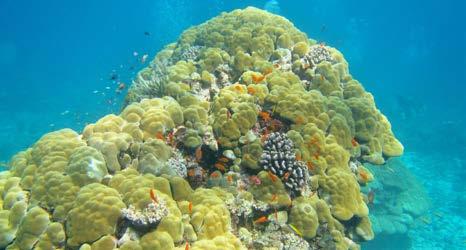
A healthy reef is noisy. When looking for a place to settle, coral larvae are attracted to the sounds of healthy reefs. Credit: Frédéric Ducarme, CC BY-SA 4.0
Just as people might avoid homes near railroad tracks or an airport, larval coral pay attention to sounds when home shopping. But instead of peace and quiet, coral larvae listen for the rich soundscape of a thriving coral reef. Reefs heavily damaged by coral bleaching, disease or human behavior are far quieter, without the noises of fish, shrimp, and other animals in a healthy ecosystem.
Researchers discovered this from experiments in the U.S. Virgin Islands in the summer of 2022. They placed cups of mustard hill coral larvae along three reefs on St. John’s southern coast. Cocoloba Reef and Salt Pond Reef have few corals and fishes, but the third reef, Tektite Reef, is relatively healthy. The scientists set out cups at various distances from underwater speakers at each reef. Then they played healthy reef sounds, recorded a decade earlier at Tektite Reef, for three days—but only through the Salt Pond speakers.
Nearly twice as many larvae settled in the Salt Pond cups than the other reefs’ cups. Though cups closer to the speaker had the most larvae, even those 30 meters from Salt Pond speakers had more larvae than at the other reefs. Cocoloba and Tektite had similar settlement rates, the researchers suggested, likely because Tektite has suffered degradation from hurricanes, bleaching, and disease in more recent years and may not sound as inviting as it once did. These results also suggest that sound could be a useful tool for repopulating damaged reefs.


The C.A.L. family of lures offer a wide variety of lure shapes for both freshwater and saltwater fishing. From small ponds to deep jigging ocean reefs, D.O.A. has you covered.
Made from tough soft plastic, each lure is made to match up perfectly to D.O.A. short and long shank jig heads.

www.ScienceAndTheSea.org © The University of Texas Marine Science Institute
www. doa lures.com Made in USA C.A.L.
5” Swim Bait
C.A.L. 4” Shad Tail
C.A.L. 3” Shad Tail
C.A.L. 4” Jerk Bait
221981_DOA_10.5_TxSF_CAL Family_3.685 x 4.875.indd 1 10/5/22 2:34 PM TSFMAG.com | 61
C.A.L. 5.5” Jerk Bait C.A.L. Paddle Tail C.A.L. Curl Tail

Port Mansfield
Captain Wayne Davis has been fishing the Lower Laguna-Port Mansfield for over 20 years. He specializes in wade fishing with lures.
Telephone
210-287-3877
Email captwayne@kwigglers.com
WAYNE’S Mansfield Report
Greetings from Port Mansfield! I will start off by pointing out that summer is early. Just a few days ago I documented 90° water temperature in a back lake. Additionally, our winds have been relentless this year with a consistent average of 20 mph and greater from the south/southeast. We’ve had a few days of light wind and what a welcome relief when it happens. High wind limits our ability to fish many of the areas I prefer this time of year, so I must work areas that can be fished during windy situations, such as back lakes and, as much as I hate to admit, deeper breaks and guts on the leeward side of the bay. Higher-than-average water levels this early summer had me wading belly-deep and, if you know me or seen any of my videos, I seldom work greater than thigh-deep water. Not to sound too discouraging, we are catching fish, and some nice ones at that, but developing a reliable pattern has been challenging.
Our tides have begun to recede slightly, which is good because they have been exceptionally high through May and early June. As we plug along through summer the winds should back down somewhat, which will allow me to work windward points and coves. These areas will produce good fish as will shallow sandbars with deep water access. Bait will pile up along the edges of these sandbars and there is no doubt good trout will be under the bait or on the edges. When you see this, you can expect some of the best topwater action you might imagine. Just prior to this writing we had a day of light wind, very little floating grass, and a ton of mullet in large rafts. We were tossing Mansfield Knockers right on the edges of the mullet and good trout were hammering the baits. It is unclear whether they love or hate the Mansfield Knocker. I suppose it does not really matter but it would be nice to know.
Respectable numbers of flounder have been showing lately. Most are in the 2- to 3-pound range but there have also been some really impressive five pounders among them. Flounder are exceptionally fun to target and catch because they are so unique and offer quite the angling challenge…and require some patience as well. I would like to touch briefly on angler confidence and the action of lures. I have long been a strong proponent of fishing soft plastics that offer resistance and vibration that I can feel in my rod. To fully understand this you will need a highly sensitive rod such as an FTU G2 Green Rod and your reel filled with braided line. Now, having said that,
there are plastics that are hard to “feel”, and these would be rattails and smaller paddletails. However, anglers need to have confidence the lure is doing what it was designed to do, since most of the time we cannot see them beneath the surface. I have been using smaller baits lately, such as the junior-size Wig-A-Lo and Ball Tail Shad. The Wig-A-Lo junior does offer some feel (vibration) on the retrieve as it “paddles” along, but not so much with the Ball Tail. This does not mean the Ball Tail isn’t performing as designed because it consistently catches fish. So, I have spent some time watching it, along with other styles of plastics in ultra-clear water. Once I can witness the way it swims I can then apply this to my presentation. Another thing worth noting is the sink rate of plastic baits paired with various jighead weights. Once you understand these characteristics you can become more creative with your presentations, all the while trusting your lure is doing what it is designed to do, even when you cannot see it. See accompanying QR code video for more details.
Our fishery is strong, despite a slight downtick in being consistently able to produce large trout. Interestingly, I have not heard much negative chatter concerning the recent reduction in trout bag limits or the new length slot. I am excited to see what our trout fishery will look like in a few years. I cannot help but think that sometime within the next five years or so, with these new regulations and a little help from Mother Nature, some lucky angler will land a new state record speck. Remember, we are in full-blown summer season, so keep that in mind when out boating and fishing. Giving other anglers as much space as possible goes a long way.
Until next time, remember, fresh is better than frozen.



View The Video
Open Camera and hover over QR Code. When link appears at top of screen tap to open in YouTube.
WAYNE DAVIS
Sheri Kettlety with a great flounder on her first day wade fishing.
62 | July 2024
Amanda Butts with a nice red on a day when the wind gave us a break.



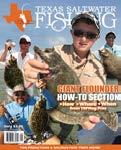

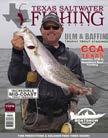


Auto Renewal available with all subscriptions! GET FREE E-MAG WITH HARDCOPY PURCHASE! Order today and receive a 12-month subscription for $32.00. Hurry and sign up family members and/or friends at the same rate! AM EX 361-785-3420 Monday – Friday 7:30 a.m. – 4:30 p.m. To order subscriptions simply fill this form out below & mail it to the address below, fax, email or go online. SUBSCRIPTION FORM Subscribing for more than yourself? Please write additional information on a separate sheet of paper. 12 months print - $32.00 12 months digital only - $15.00 24 months print - $56.00 361-792-4530 TSFMAG.com | 63

Arroyo Colorado to Port Isabel
A Brownsville-area native, Capt. Ernest Cisneros fishes the Lower Laguna Madre from Port Mansfield to Port Isabel. Ernest specializes in wading and poled skiff adventures for snook, trout, and redfish.
Cell 956-266-6454
Website www.tightlinescharters.com
SOUTH PADRE Fishing Scene
I want to begin this month with something that has been on my mind for years. As I travel and fish around the world I can’t help but notice the conservation ethic of most of the locals, guides, and outfitters I meet. They realize the role of healthy fisheries in ensuring their livelihoods. They know that if the fisheries decline, no one will want to return, and the passion that draws us to their waters will eventually be lost.
We have laws in Texas to protect and conserve our fisheries and scientific studies are conducted to support this. Before a law is implemented, public input meetings are held around the state. All of this is good and I support it, but we as individual anglers can do even more. Let’s enjoy the sport, including the catching, but only keeping what we need for a fresh meal and releasing the rest to be caught another day. Actions like these can and will make a difference toward returning our fisheries to their former glory.
It’s been seven years since I implemented a Catch-and-Release Program in my charter business to promote conservation and reward anglers who voluntarily participate in this initiative. Some of my sponsors have teamed with me and the Catch and Release Effort (C.A.R.E.) Program by offering prizes to one lucky participant whose name is drawn from all who participated throughout the year. Over the years my clients have released thousands of fish that swam away to continue spawning and be caught again another day.
Currently, I would say redfish have been fair to good on the flats, although constant winds have made it difficult to determine how abundant they may be in any given area. Hopefully the weather pattern will soon change and the winds will begin to lie down in July. If and when this happens we will be able to see more fish on the flats and get a better idea how many are out there. Generally speaking, July’s calm mornings and evenings provide some of the best opportunity to locate schools of reds tailing on flats with the least amount of boat traffic.
The east side sand flats will hold redfish from early to mid-morning. After that, they tend to retreat to deeper, cooler water. During the hottest part of the day, think deep as fish will drop off to cooler water temperatures, like the ICW and other guts and channels scattered throughout our bays. Weedless gold spoons have long been a favorite summertime redfish lure. ZMan baits made of ultra-tough ElaZtech are another excellent choice as they can withstand all the piggy perch bites prevalent during the summer months.
summer, I typically start in deeper water and stay deeper all day. What’s deeper water? Basically, from waist to shirt pocket is where I focus the majority of my effort, working the lower third of the water column.
The summer months are known for exceptional numbers of smaller trout coming to hand. Please handle these little guys as carefully as you can and release them quickly. You never know which of them might become your 30-inch trophy in a few years.
July is also famous for sweet-smelling trout slicks. These slicks occur more often during tidal movements and solunar feeding periods. Remember, the smaller and sweeter the aroma the more recently it was created. I like to aim my casts at least 20 to 30 yards upwind of the place slicks originate. The edges of the ICW and adjacent spoil islands often hold the most slicking activity.
The hotter the better is a good rule of thumb for anglers hoping to tangle with a Texas snook. We enjoyed exceptional success with snook last summer – the best in ten years! Given the relatively mild winter, I am expecting similar or even greater success this summer.
Very similar to spotted seatrout, snook spawn during the warmer months with peaks of activity occurring during new and full moon periods. With strict harvest regulations over the years, they have thrived and become easier to target in parts of the Lower Laguna. Over the years I have heard of snook being landed in places where they were never available before and that is good news.
In my opinion Texas is headed in a positive direction regarding healthy fisheries. As I mentioned at the beginning, I travel the world and have experienced very few places that match our fisheries here in the Lower Laguna Madre.
Let’s all C.A.R.E.!


Redfish are more heat tolerant than trout. Targeting trout during

View The Video
Open Camera and hover over QR Code. When link appears at top of screen tap to open in YouTube.
CAPT. ERNEST CISNEROS
Kathy Acosta had a great day with the redfish on a recent charter.
64 | July 2024
I highly recommend ZMan’s Eye Strike weedless hooks!
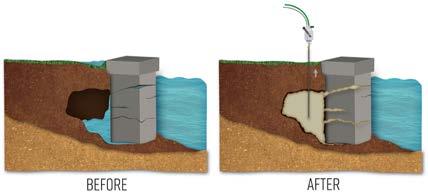










See through Deer’s Eye View is an AIpowered app that allows you to see how the animal sees! Download the app today on Apple and Google! Download Today EYES PREY of your the DEER’S EYE VIEW catfoam.com 1-800-595-1880 Fast/Affordable Risk Mitigation No Heavy Equipment Convenient Environmentally Friendly Benefits: Porches & Stoops Driveways Sidewalks Pool Decks & Patios Bulkhead &
Repair The Deep Foamjection™ process will create a solid barrier preventing future erosion and degradation of sea wall/ bulkhead sub structure. Before Concrete Lifting: Drill. Pump. Patch. TSFMAG.com | 65
Seawall
FISHING REPORTS AND FORECASTS from Big Lake to Boca Chica
Trinity Bay - East Bay - Galveston Bay | James Plaag
Silver King Adventures - silverkingadventures.com - 409.935.7242
James had good luck fishing for trout on trips prior to giving this report. “We’ve been doing well wading lately, with a good topwater bite on small lures like She Pups some of the time, and a good bite on hard baits at times too. The water looks pretty sketchy and tastes pretty fresh in some of these places, but the trout are there, for people willing to deal with the sloppy water. Most of these areas are in the southern extremes of the bay system, closer to the gulf. This should continue to be the case moving into the heat of the summer. With so much freshwater moving down both rivers over the last couple months, the fish have been forced out of the upper parts of the bays. When this happens, West Bay and Lower Galveston Bay often produce the best results. We will continue to wade much of the time, until we hit the hottest part of summer, sometime in July. Then, we do better fishing deep structures out of the boat, keying on slicks and bait. Even if we still have dirty freshwater on top, there’s usually salty water near the bottom in the deeper water.”
Jimmy West | Bolivar Guide Service - 409.996.3054
Jim was excited about the prospects of fishing in the Bolivar surf when we talked. “We’ve got a light NW wind right now, and I just went to take a look at the water in the pocket. I think we’ll probably whack ‘em pretty good in the morning. This is predictable, with all the freshwater influx into Galveston Bay lately. The fish get pressured into the southern parts of the system, and eventually the jetties and the surf are better than most places in the bays. We have had a good run catching trout on the south shoreline of East Bay recently, but it appears to have come to an abrupt end. The water is really fresh in there right now, so I expect deeper areas to become better than the shallow parts. In the deeper parts out on the middle, there’s usually a layer of salty water close to the bottom, and the fish will concentrate in such places in big numbers. So, moving into July, if the water doesn’t get significantly more salty, the best fishing in this area will likely be out of a boat, either around the deeper reefs, or at the jetties.”
West Galveston - Bastrop - Christmas - Chocolate Bays
Randall Groves | Groves Guide Service
979.849.7019 - 979.864.9323
Like many other fishing guides working the coastal waters of Texas, Randall eagerly anticipates calm weather, so he can run some charters in the surf during July. “We’re watching the surf lately, waiting for the green water to move in close to the beach, so we can head out that way and throw topwaters at the trout. That’s one of the most enjoyable ways to catch them, for sure. The predators have lots of food available to them lately, as our area is loaded with bay anchovies, mullet, shad, glass minnows, ballyhoo and ribbonfish. When it’s like this, people who can match the hatch do better than people who stubbornly stick to the same lures all the time. Lately, we’ve had a great bite on topwaters with blue and chrome on them. If I find a bunch of ribbonfish in a place, I like to switch over to white Skitter Walks, which seem to mimic the slender, silver fish better. Our best fishing in July usually happens with a moderately strong tide coming in during the morning hours. Tides moving too strongly can muddy the water. On boat-fishing charters, live shrimp is usually the ticket to fast catching.”
Matagorda Bays | Capt. Glenn Ging
Glenn’s Guide Service - 979.479.1460 www.glennsguideservice.com
The heat has already arrived. July brings calmer days and hopefully plenty of good shots at fishing the surf and jetties. In the heat of the summer, we look for fish in deeper water and areas with good current flow. When the summer heats up, I like to drift deeper shell in East Matagorda Bay, fish deeper reefs and wells in West Matagorda Bay, and hit the jetties and surf any time the opportunity presents itself. This is the time of year you don’t want to hit the snooze button too many times, as the early morning bite can be the best of the day. At the time of writing this report, redfish have been pretty sparse, with most caught by waders on the shorelines on paddletail plastics and a few coming out of the back-lakes on live and cut-bait. Drum have pretty numerous on shrimp along shallow reefs. Trout numbers are noticeably better, with some good ones up to 28 inches being caught drifting with live shrimp under Coastal Corks and soft plastics like Bass Assassin 5” Sea Shads on eighth-ounce jigheads. Fishing in July can be really consistent, so don’t pass up a chance to get out early and try it.
Palacios | Capt. Aaron Wollam www.palaciosguideservice.com - 979.240.8204
Fishing is great heading into summer in the Palacios area. We’ve been smoking the redfish and black drum on shell points and pads in about three feet of water. Live shrimp rigged about two feet under popping corks have been the best bait. We’ve also been peeling shrimp on days when the water is muddy for more scent. Trout are in their hot weather patterns, lurking over deep reefs and shell pads in twelve to fourteen feet of water in West Matagorda Bay. Tripletail are starting to show up and we’ve seen some bruisers pushing 20 pounds. Most any structure, floating seaweed or trash will attract these fish. Live shrimp rigged about a foot under corks works good for floaters, while a five-foot drop works better around structures. July should bring some good surf fishing days. I can’t think of a better way to start a day than to see the sun coming up and trout busting topwaters in the first gut. Flounder gigging should also improve in July as bigger fish start to move in. We have lots of juveniles in the bays right now. Pea gravel shell bottoms hold the bigger fish.
Port O’Connor | Lynn Smith Back Bay Guide Service - 361.935.6833
In July, Lynn likes to get an early start and take advantage of the cooler temperatures and typically hot bite. “This is one of the best months of the year to get in the surf to target trout. Normally, after the 4th of July, winds settle down significantly, and we have plenty of good days to head out along the beachfront. Out there, the drill is well established. We like to get out of the boat and wade, staying really close to the beach early, targeting the trout in the first gut, sometimes in the second gut. They’re normally aggressive in the relatively cool water, and topwaters work great most of the time. As the sun heats up the sky and the water, the bite is normally better in the deeper guts, so we move away from the beach and sometimes switch over to soft plastics or sinking twitchbaits, especially if it’s a sunny day. When we’re not fishing the surf, we like to stay on flats close to

66 | July 2024
the pass or the jetties, where deep water with plenty of current is close by. We sometimes start finding lots of trout lurking around spoil humps between POC and Port Lavaca in July.”
Rockport | Blake Muirhead
Gator Trout Guide Service - 361.790.5203 or 361.441.3894
Blake says the fishing in the Coastal Bend has continued excellent throughout the spring, and he expects the bite to be consistent this summer too. “We’re just now hitting that time when the water temps rise into the 80s and stay there all the time. Generally, this means we’ll have a period when topwaters work well on a daily basis for a while. When that’s true, I like to fish in the surf as much as possible, also along some of the shorelines with lots of sandy potholes breaking up a grassy bottom. Once the weather gets even hotter, say after the middle of July, we tend to do better throwing soft plastics, Gulp! lures, and of course by wading with live croakers. We will start fishing with live bait some of the time, when conditions are tougher. But, when conditions are right, the topwater bite does tend to stay good out on the surf, right on through the end of summer. Out there, the action is often best the first two days after the green water hits the beach. If the weather stays calm for longer than that, and the water becomes crystal clear, the bite can become tougher again.”
Upper Laguna Madre - Baffin Bay - Land Cut Robert Zapata | rz1528@grandecom.net - 361.563.1160
In July, crowds are big on the waters of Baffin Bay and the ULM, and for good reason. The fishing is usually about as hot as the weather. This time of year, we like to target our trout and redfish in relatively shallow water, depths less than about three feet, during the early-morning hours. The fish like to chase the bait into the cool water late at night and they linger in the shallows for a while after the sun comes up. Some days, we catch plenty of trout on topwaters right after daybreak, and MirrOlure Catch 5s work well lots of days too, as long as the amount of floating and suspended grass is reasonable. Of course, as the days heat up, the locations where we fish change somewhat. We find the bite better late in the mornings and in the middle of July days in deeper water, around rocks in Baffin or along deeper grassy edges and drop-offs in the Laguna Madre. The bite in those places at those times is usually better on soft plastics rigged on eighth or sixteenthounce jigheads. Fishing for drum by sight-casting in potholes on shallow flats also works great during the heat of the day.”
Corpus Christi | Joe Mendez - www.sightcast1.com - 361.877.1230
In July, Joe ranks several similar places near the top of his favorite spots for fishing in hot weather. “I like places with some structure covered by shallow water lying relatively close to deep water this time of year. The Kenedy Shoreline, including Rocky Slough and Summer House, meet that description. We always do well this time of year when winds are relatively light, throwing at the outside edges of the rocks lying close to the drop-off down there. Of course, the ICW and the Yarbrough Basin are close by, and they’re both relatively deep. Yarbrough has the deepest water in all the ULM, except for the ICW, in fact, and the flats near Baldy and at the Gutters produce good catching this time of year. Early in the mornings, the fishing is better well up on the flats, and later in the day, fishing in the deeper water along the drop-offs works better. I have also had great luck at times around some of the big rock formations in Baffin in hot weather. This includes the rocks at Penascal and across the Riviera Channel in the south end of the Badlands, also Cathead and East Kleberg’s rocks.”
P.I.N.S. Fishing Forecast | Eric Ozolins
361.877.3583 - Oceanepics.com
The speckled trout bite has been hot lately, with many crashing topwaters, and also soft plastics and slow-sinking twitchbaits. This time of year, the baitballs really start to materialize offshore, making it all the way to the beaches some afternoons. These frenzies can involve jack crevalle, Spanish mackerel, skipjacks and tarpon. Throwing spoons or topwaters should easily result in regular hookups. Redfish are still around though numbers are dwindling – mostly being overrun by skipjacks, which are extremely fun to catch, especially on light tackle or fly. Shrimp and Fish-Bites will produce whiting and possibly a few pompano and drum. In July, shrimp boats working in the gulf typically pulls a lot of the smaller blacktip sharks offshore. Meanwhile, fishing the hot stagnant nights will produce some monster tiger, bull, and hammerhead sharks. This time of year, it’s “go big or go home.” Running smaller shark baits like whiting usually attracts a scalloped hammerhead or more likely a large ray. Mature southern and roughtail rays are abundant in the shallows, feeding on crustaceans and small fish.
Port Mansfield | Ruben Garza


Snookdudecharters.com - 832.385.1431
Getaway Adventures Lodge - 956.944.4000
Schooling redfish can often be found around the jetties and in the surf during July, as can tarpon, king mackerel and jack crevalle. Catching many of these fish requires the use of wire leaders. On the inshore side, the Saucer area is a great place to fish during summer. Staying within a couple hundred yards of the ICW is often the key to locating fish. The early-morning topwater bite is reliably good, especially on Mansfield Knockers in colors like Bone Daddy, Ruby Tuesday and Zombie. This area also produces a few oversized trout. As for soft plastics, I like all the KWigglers lures on either eighth or sixteenth-ounce jigheads, depending depth and current strength. Preferred colors are Mansfield Margarita, Lagunaflauge, Bone Diamond and Plum-Chartreuse, depending on water clarity. Winds are typically lighter in July and the west shoreline usually holds plenty of trout and reds, both north and south of Port Mansfield. Keep an eye on the slightly deeper water for schools of redfish, which look like dark spots in the green water. I personally like to get in the mid-thigh to waist-deep water and work topwaters on the west side, always keeping an eye on the shallows for tailing reds.
Lower Laguna Madre - South Padre - Port Isabel
Aaron Cisneros | tightlinescharters.com - 956.639.1941
With warmer water temperatures becoming the norm as we head into summer, trout fishing has been most reliable on flats lying close to the ICW, and along the edges of the ditch itself. No surprise, given how quickly the water temperatures have risen over the past few weeks. Lately, we are finding trout ranging from 15 to 25 inches mixed together. A solid plan for avoiding smaller fish congregated near the surface and mid-way in the water column is to work a four-inch Z-Man StreakZ rigged on a 3/8-ounce Eye-Strike Trout-Eye jighead close to bottom in the deeper channels. Redfish generally focus their attention on smaller forage this time of the year, so small lures work well to target them. Redfish have plentiful during early morning around spoil islands and adjacent shallow flats. Bone Spook Jrs rigged with single hooks to avoid floating grass have been producing plenty of hook ups. Later, after the day warms and the wind begins to pick up, we’re fishing grassy flats averaging about four-feet deep with weedless gold spoons and ZMan SwimmerZ in Golden Boy color.
TSFMAG.com | 67

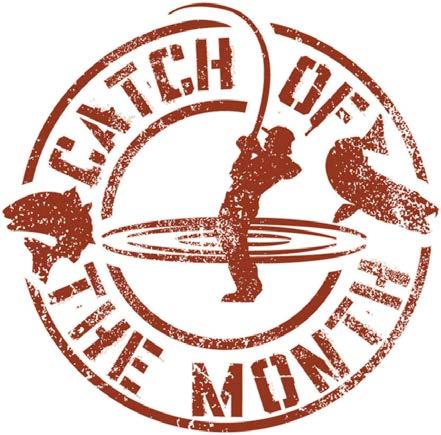






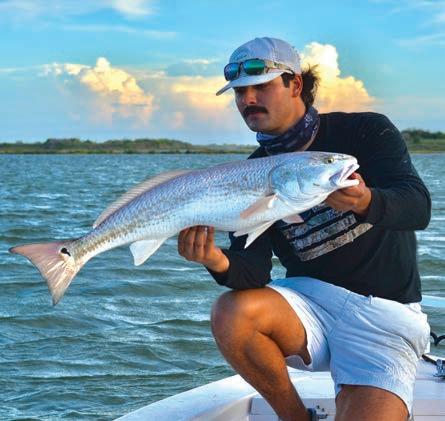 Jonathan Saldivar 26.5” 6.5 lb trout CPR
Amy Ellzey Port Mansfield- 28” trout
Noah Elizondo redfish
Kenny and Perry Baumann Sabine Pass- 26” reds CPR
Ruben Fonseca Lower Laguna Madre- 33” snook
Keith Oltmann East Matagorda Bay- 21” flounder
Jonathan Saldivar 26.5” 6.5 lb trout CPR
Amy Ellzey Port Mansfield- 28” trout
Noah Elizondo redfish
Kenny and Perry Baumann Sabine Pass- 26” reds CPR
Ruben Fonseca Lower Laguna Madre- 33” snook
Keith Oltmann East Matagorda Bay- 21” flounder
68 | July 2024
Stephanie Wills Galveston Bay- 21” trout



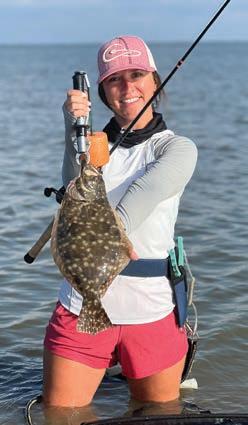

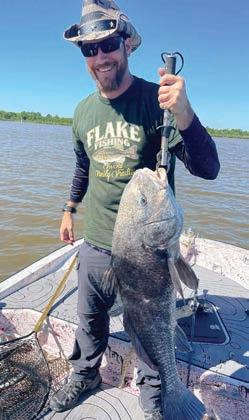




First come – first published! Photos are judged on artistic merit and sporting ethic displayed. No stringer, cleaning table, or hanging board images allowed. Digital images only. Adjust camera to high or best quality. All images become property of TSFMag. Email to: Photos@TSFMag.com Include short description of your catch with name, date, bay system, etc.
Photo
Gallery Guidelines
Julian Lerma IV Galveston- black drum
Benjamin Luce Boliver surf- 39” bull red
Jason Guajardo Port Mansfield - 28” trout
RJ Braune Baffin Bay - 25” trout
Tom Ellzey Port Mansfield- 40” bull red
David Flake 36” 22 lb black drum CPR
Jerry Threet Austin Bayou- 4’ 2” black gar
Meagan Young flounder
TSFMAG.com | 69
Rich Gonzales Pleasure Island- 41” black drum

Got ideas, hints or recipes you’d like to share? Email them to pam@tsfmag.com or send by fax: 361 792-4530
Gulf Coast


Maple Rum Redfish Bites
INGREDIENTS
2 large redfish fillets
1 package bacon salt and pepper
Maple Rum Glaze
1/2 cup maple syrup
3 Tbsp spiced rum
6 Tbsp low sodium soy sauce
2 Tbsp Dijon Mustard
4 Tbsp freshly minced garlic, or
1¼ Tbsp dried minced garlic
1/8 tsp cayenne pepper
PREPARATION
Cut redfish fillets into 1½” cubes, add salt and pepper. Wrap each cube with a half strip of bacon and secure with a toothpicksoaking toothpicks in water is necessary when broiling or BBQing. Place wrapped redfish pieces in a glass dish and set aside.
Glaze
Mix all the ingredients for glaze together and pour over redfish pieces, allow to soak for 10 to 15 minutes. Reserve glaze after removing redfish pieces for basting while cooking.
Place marinated pieces on a baking sheet covered with foil.
These can be cooked on a stovetop, broiled in the oven, or BBQ grill. Cook until bacon is done and fish flakes.
If using the broil method, set broiler to high, watch carefully, turning pieces to cook evenly.
Whichever your cooking method might be, baste liberally and do not overcook.
Yields 24 – 30 pieces
PAM JOHNSON
70 | July 2024



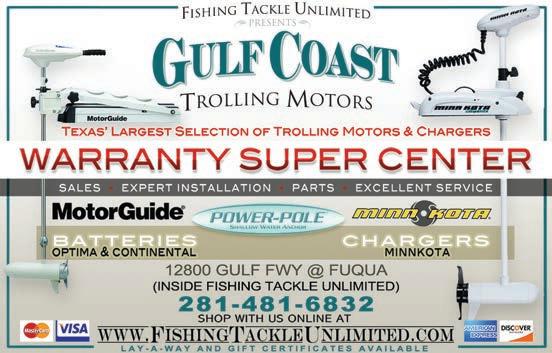






Capt. Lynn Smith’s Back Bay Guide Service Port O’Connor Area TROUT REDFISH FLOUNDER Wade & Drifting the Back Bays & Surf Call 361.983.4434 (cell 361.935.6833) Email lynn@tisd.net (tswf.com/lynnsmith) ON THE WATER Saltwater Fishing Clinics WITH Capt. Robert Zapata If you are having difficulty catching fish on a consistent basis, the clinic is designed for you. Learn Capt.Robert Zapata’s secrets to finding and catching more fish from his 25 years of experience as a professional fishing guide. For Information Call 361-563-1160 TSFMAG.com | 71


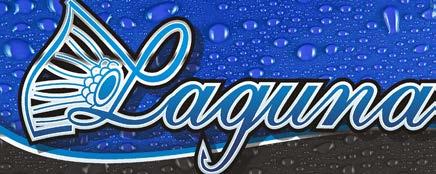
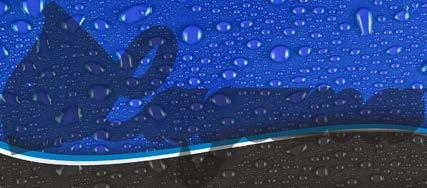









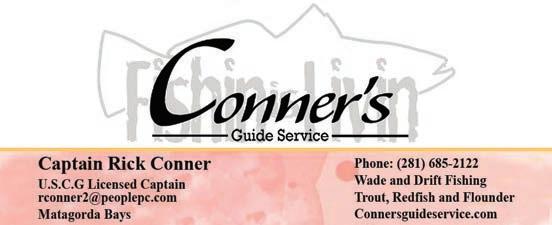

•
•
•
•
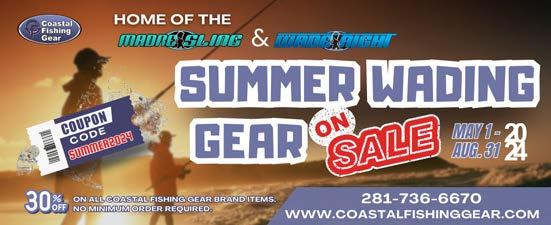

TEXAS SALTWATER FISHING HOLES USCG Licensed Captain Stan Sloan MATAGORDA BAY Speckled Trout / Redfish 832.693.4292 www.fishfcc.com Fin Tastic Coastal Charters PESCADO PARK RV PADS & BOAT STORAGE Baffin Bay near Kaufer-Hubert Boat Ramp DAN WARD 832-860-4600 dwpescado@gmail.com
Bay Fishing, Offshore, Floundering, Waterfowl, Dove
Night Fishing off Lighted Pier
Right On The Water
Lodging with/without
Your ad could be here! RandyNickerson 281-665-1300 72 | July 2024
Meals www.matagordasunriselodge.com 979-241-1705



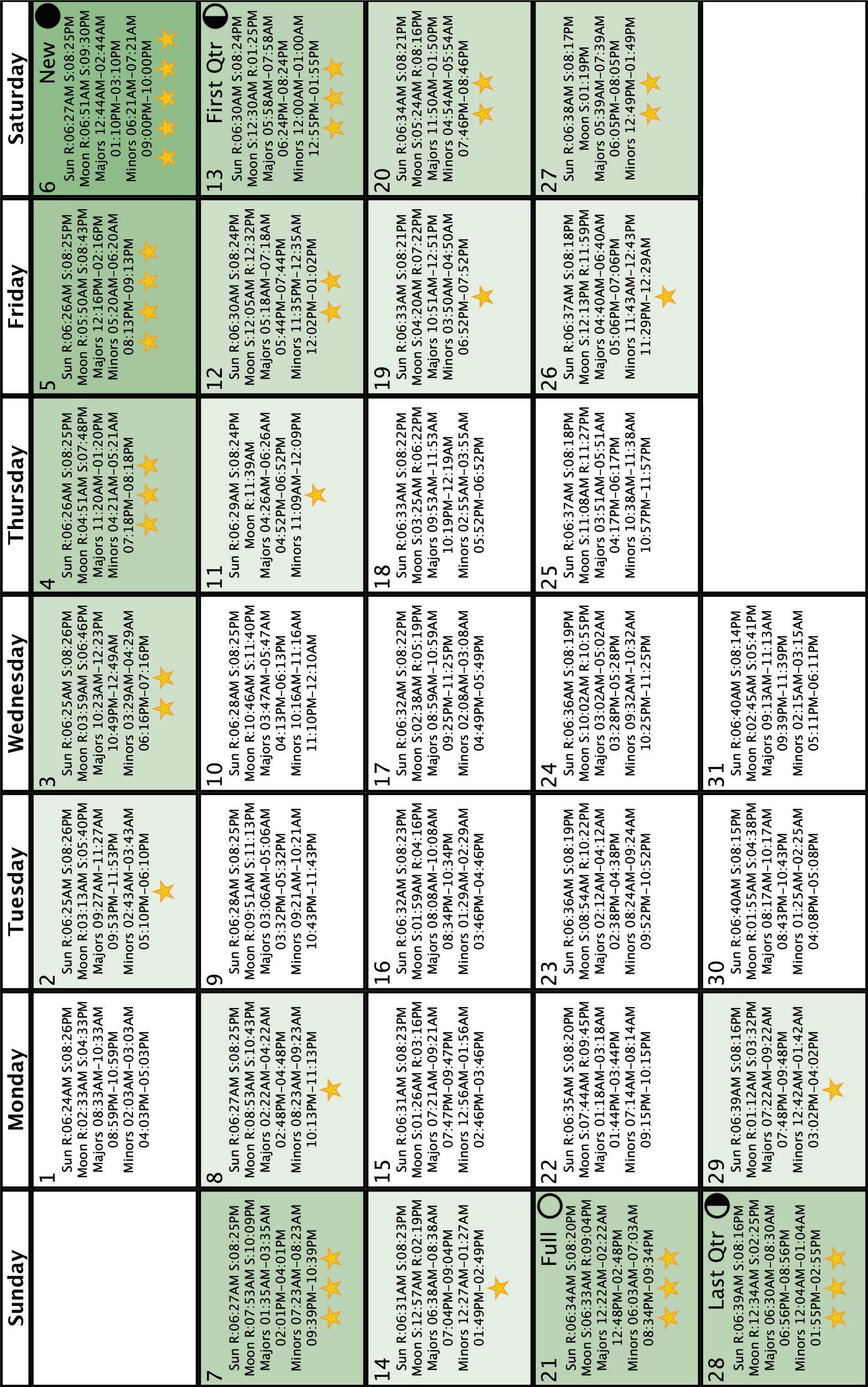
 Brought to you by
Brought to you by





Texas Saltwater Fishing Magazine l www.texassaltwaterfishingmagazine.com
Reel In Big
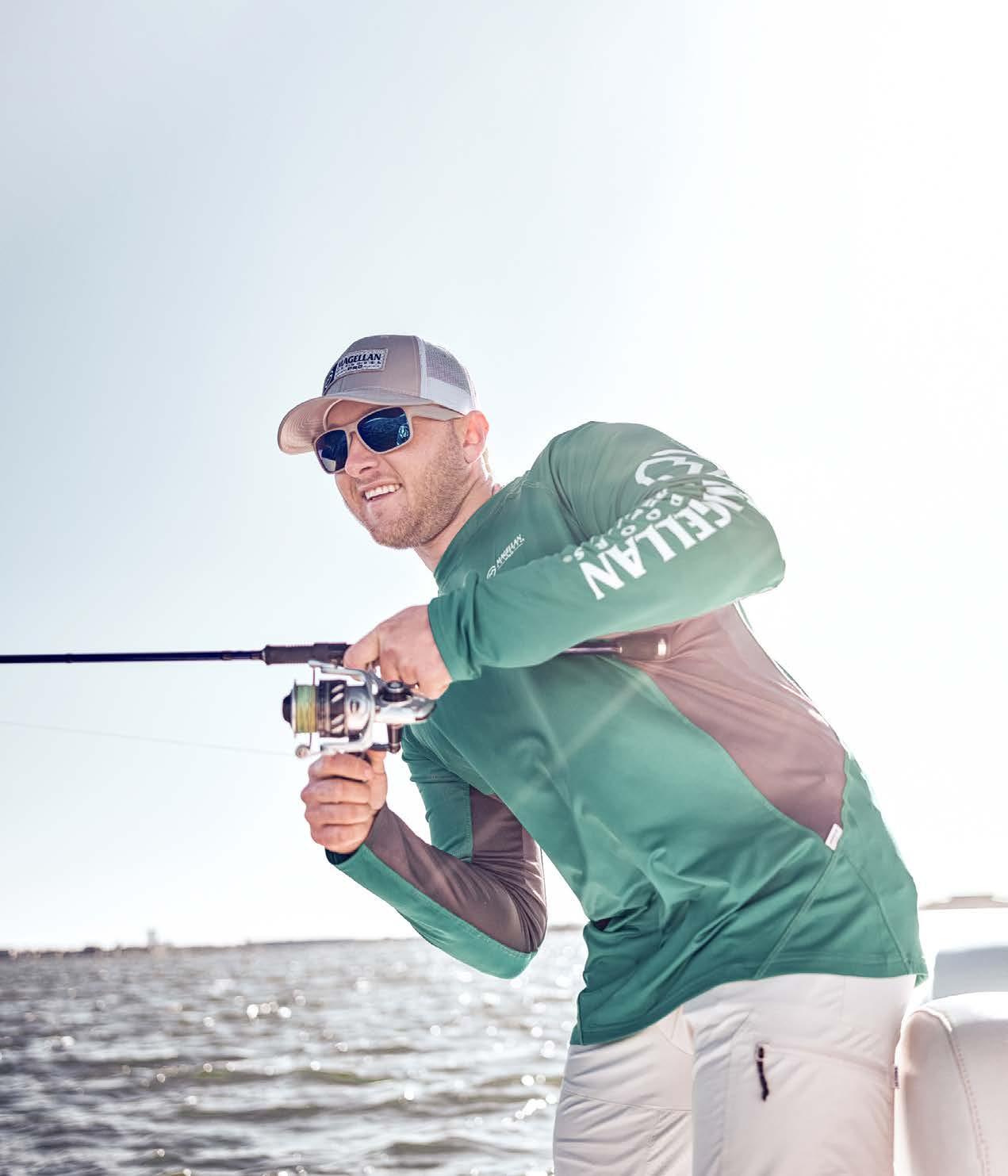
Catch the best value on top brands in fishing gear.












































































 Joel Estes tricked this solid one on a 5” Slammin’ Chicken Assassin while casting to nervous mullet over a sand flat.
Joel Estes tricked this solid one on a 5” Slammin’ Chicken Assassin while casting to nervous mullet over a sand flat.


























 Dow Gene Anderson with a healthy redfish that couldn’t resist a ZMan plastic dangled below a 4-Horsemen rattling cork.
Dow Gene Anderson with a healthy redfish that couldn’t resist a ZMan plastic dangled below a 4-Horsemen rattling cork.






 Chuck fishes Sabine and Calcasieu Lakes from his home in Orange, TX. His specialties are light tackle and fly fishing for trout, reds, and flounder.
Chuck fishes Sabine and Calcasieu Lakes from his home in Orange, TX. His specialties are light tackle and fly fishing for trout, reds, and flounder.







 Not the ideal landing net, with a harsh nylon mesh, but better than using a gaff.
Not the ideal landing net, with a harsh nylon mesh, but better than using a gaff.







 One of Pam Johnson’s dozen or more bull redfish this day…and that’s no bull!
One of Pam Johnson’s dozen or more bull redfish this day…and that’s no bull!







 It’s not exactly as easy as falling off a log… but even gray-bearded editors can do it.
When they’re not bustin’ the surface in a feeding frenzy we find them suspended with the help of our Humminbird Solix.
The right class of tackle with the right lure – Penn Squall loaded with 50-pound braid, custom 7-foot medium-heavy rod, 4-ounce Spro Bucktail tipped with ZMan DormatadorZ Curlytail. Gets ‘em every time!
Just about any natural bait and a variety of lures will hook a bunch of bulls, but over the years we’ve dialed into this trusted combination of Spro jigs and ZMan plastics.
Joe Meyer had a great morning; said wrestling six bulls was plenty enough for anybody.
It’s not exactly as easy as falling off a log… but even gray-bearded editors can do it.
When they’re not bustin’ the surface in a feeding frenzy we find them suspended with the help of our Humminbird Solix.
The right class of tackle with the right lure – Penn Squall loaded with 50-pound braid, custom 7-foot medium-heavy rod, 4-ounce Spro Bucktail tipped with ZMan DormatadorZ Curlytail. Gets ‘em every time!
Just about any natural bait and a variety of lures will hook a bunch of bulls, but over the years we’ve dialed into this trusted combination of Spro jigs and ZMan plastics.
Joe Meyer had a great morning; said wrestling six bulls was plenty enough for anybody.


 Jason Shive got into plenty of action the morning he joined us.
Jason Shive got into plenty of action the morning he joined us.





























 By Shane Bonnot – CCA
Director
By Shane Bonnot – CCA
Director


















 By TPWD Staff FIELD NOTES
By TPWD Staff FIELD NOTES












 Oz selfie image while releasing hammerhead.
Rocky Guerra with bull shark landed on Ozmosis rod.
Butt section label, typical of the Ozmosis rod line.
Oz selfie image while releasing hammerhead.
Rocky Guerra with bull shark landed on Ozmosis rod.
Butt section label, typical of the Ozmosis rod line.


 JAKE HADDOCK MOSTLY
JAKE HADDOCK MOSTLY













 Excel Stormcat
Excel Stormcat



























































 Jonathan Saldivar 26.5” 6.5 lb trout CPR
Amy Ellzey Port Mansfield- 28” trout
Noah Elizondo redfish
Kenny and Perry Baumann Sabine Pass- 26” reds CPR
Ruben Fonseca Lower Laguna Madre- 33” snook
Keith Oltmann East Matagorda Bay- 21” flounder
Jonathan Saldivar 26.5” 6.5 lb trout CPR
Amy Ellzey Port Mansfield- 28” trout
Noah Elizondo redfish
Kenny and Perry Baumann Sabine Pass- 26” reds CPR
Ruben Fonseca Lower Laguna Madre- 33” snook
Keith Oltmann East Matagorda Bay- 21” flounder












































 Brought to you by
Brought to you by





